Updated on May 29, 2020
Day 5 of Sri Lanka Trip, Polonnaruwa on July 15, 2017
Fifth day of our Sri Lanka trip.
Today we drove from Trincomalee to Polonnaruwa, the capital city of the second most ancient of Sri Lanka’s kingdoms (the first was Anuradhapura which we visited a couple of days ago), while reaching our overnight hotel near Sigiriya.
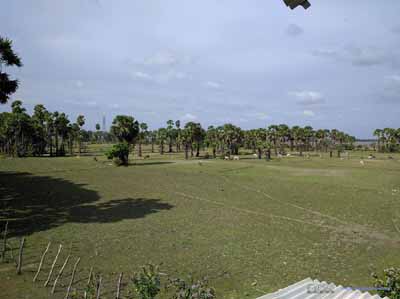
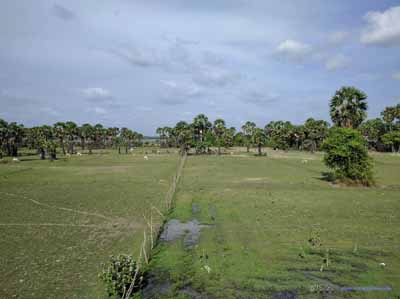 Farmland from Hotel BalconyAlthough Pigeon Island National Park attracted great volumes of visitors to Nilaveli, Trincomalee, and there were luxury hotels sprinkled along Nilaveli’s coastline, the town of Nilaveli was still very much underdeveloped. Just outside our hotel’s fence, there was this grazing ground for cows.
Farmland from Hotel BalconyAlthough Pigeon Island National Park attracted great volumes of visitors to Nilaveli, Trincomalee, and there were luxury hotels sprinkled along Nilaveli’s coastline, the town of Nilaveli was still very much underdeveloped. Just outside our hotel’s fence, there was this grazing ground for cows.
Unless otherwise specified, the years accompanying various kings in this post identified the time period those kings were in power.
Before the trip, our plan for this day and the next was that, we visit Polonnaruwa on one day and Sigiriya on another, reaching Kandy by the end of that. I was leaning to put Polonnaruwa tomorrow and Sigiriya today, because the city of Polonnaruwa has got much more to offer than the palace of Sigiriya. After a long day yesterday, we would be planning for a late start today, so time-wise it would be better.
But our driver advised us to visit Polonnaruwa first and Sigiriya later, in this way he could cut some distances for these two days (252.9km instead of 296.4 the other way around by Google Maps). He got his point, and we took his advice.
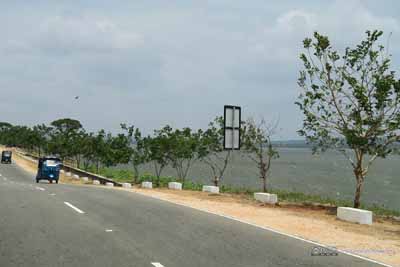
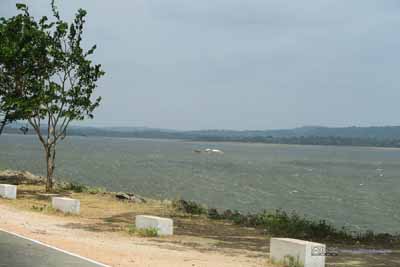
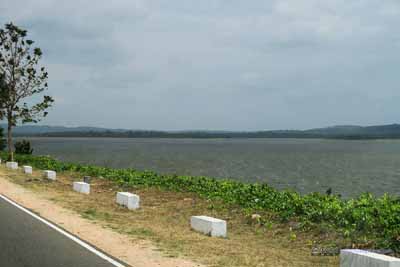
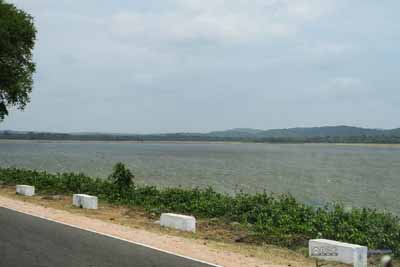 Kantale TankBuilt by king Aggabodhi II of Anuradhapura and further developed by King Parakramabahu the Great. One of the few major bodies of water in Sri Lanka.
Kantale TankBuilt by king Aggabodhi II of Anuradhapura and further developed by King Parakramabahu the Great. One of the few major bodies of water in Sri Lanka.
We were going along Sri Lanka A6 road which was typical of every other major “highway” in Sri Lanka, two-lane, in top condition and not much traffic, until we turned onto road B617 which was a shortcut to Polonnaruwa. Well, since Google Maps marked these two roads with the same color (Update: No longer the same color as of May 2020), I was expecting them to be in similar condition. However, this B617 road was narrow, bumpy and everything that a road trip shouldn’t be. Our driver told us there’s an elephant sanctuary nearby, I guess that’s why renovation of this road took so long.
Glad it only lasted 14 kilometers.
Before reaching Polonnaruwa our driver took us to a buffet restaurant for lunch. Well, if our first buffet outside Anuradhapura was still bearable a couple of days ago, this time it’s horrific, Sri Lankan food only and no air-con. Well, since we were in a hurry (it’s past noon and we haven’t reached Polonnaruwa) we just grinned and bore it. But after that we made it clear to our driver, no more buffet (see Anuradhapura post).
The collective tickets to Polonnaruwa were sold at Polonnaruwa Archaeological Museum, it’s the same 25USD like that in Anuradhapura.
But at least at Polonnaruwa we got a proper museum (with air-conditioning!) with descriptions of this ancient city. The museum was organized in phases, going from inner Polonnaruwa with royal palaces to outer Polonnaruwa with temples. Since most of the structures in Polonnaruwa now lay in ruins, the museum exhibited reconstruction models of them in their prime, which was very helpful to our tour.
By the way, no photos were allowed inside Polonnaruwa Archaeological Museum.
And by the way, Google Maps didn’t seem be very accurate in locating the ruins of Polonnaruwa. It constantly displayed the name of one ruins on another nearby ruins.
Island Park
Island Park was just next to Polonnaruwa Archaeological Museum, which was the most inner part of the ancient city of Polonnaruwa.
This large building may be the audience hall built during the reign of King Nissankamalla (reigned during 1187 – 1196 AD), although some believe that it is his palace. The building which has brick walls reinforced with wooden pillars comprises two distinct sections. The front section was a large and spacious hall with high roof. The rear section resembles an elevated platform, and though small, may have been two storied. This section has been divided into several chambers and in some of them are Seats made of stone or bricks. One room has been used as a lavatory as evidenced by the pit adjoining it. Excavations have revealed that there are several construction periods of the site. It clearly revealed that there is a smaller, but much elegant building underneath the present building.
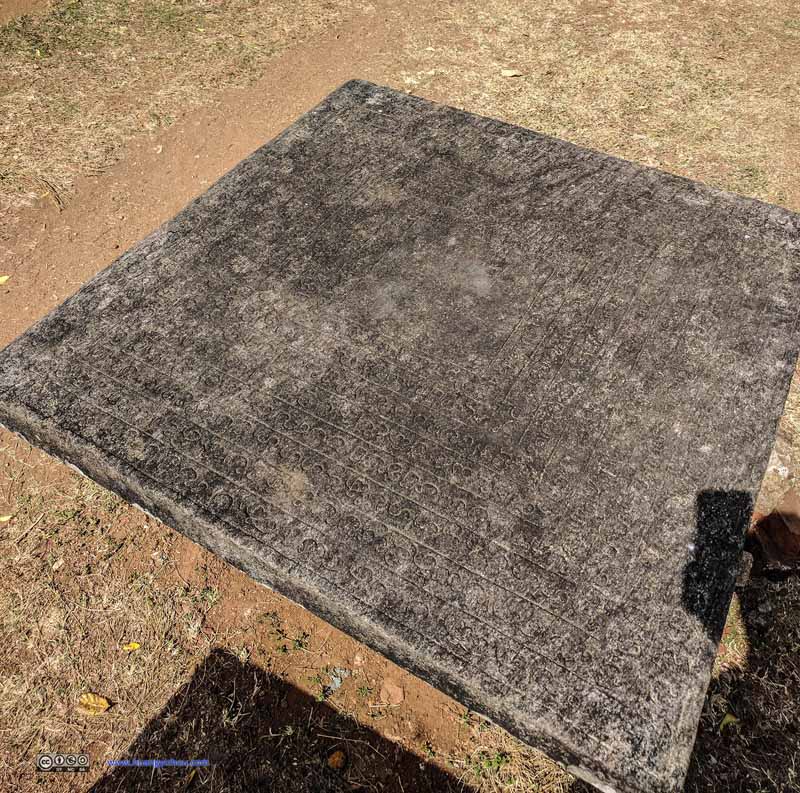
Stone Seat InscriptionThe inscription mentions that King Nissankmalla (reigned during 1187-1196 AD) secured Sri Lanka and describes about the victories he gained at the wars with India. It also mentions of the various donations to the people, renovations of temples and the economic development achieved. The seat with this inscription was used by him to watch sports and recreational events.
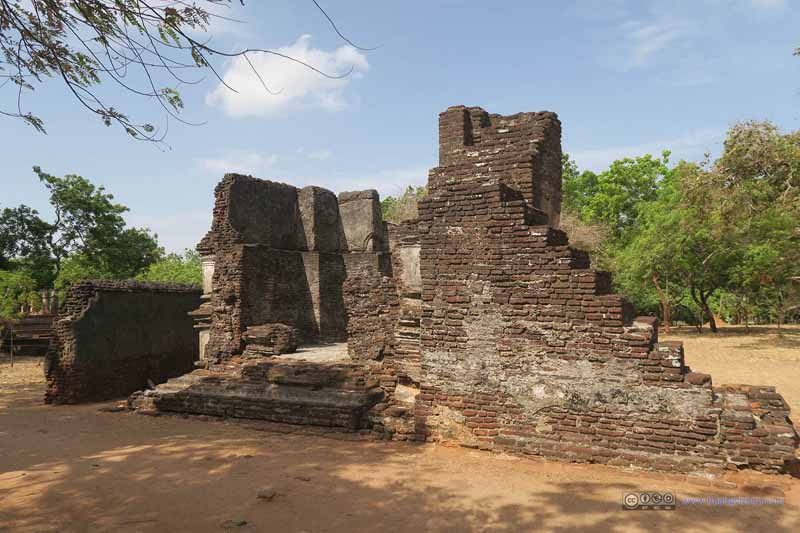
White EdificeThis edifice near the Audience Hall of King Nissankamalla (1187-1196AD) has not yet been properly identified. The white lime plaster on the exterior walls suggests that it may be the Dhavalagara, dhavala meaning white, built by King Parakramabahu the Great (1153-1186AD). Views have also been expressed that it may be symbolic of the central mountain of the universe. ‘Mahameru’ or be the mausoleum of a member of the royalty. The present remains, however, suggest that it is a storied edifice with a cruciform ground plan.
After that, our driver drove us South to Pothgul Vehera, a historic site that wasn’t in our original plan of Polonnaruwa.
Pothgul Vehera Complex
First, we followed the crowds to Maha Parakramabahu Statue.
This statue at Potgul Vihara is regarded as a superb example of Asian art. Traditionally, it is believed to be that of King Parakramabahu the great (1153-1186AD). But some scholars believe that it represents a sage and that it could be Pulasti, Agastya or Kapila. A special feature is the object in the hands of the statue, which many believe to be a palm leaf manuscript and that it represents the erudition of the holder. Another view has also been expressed that it is a yoke representing sovereignty. There may be a link between the book-like stuff in its hands and the naming of the monastery as Potgul Vihara, pot meaning book
Then there’s the actual site of Potgul Vihara not far from the Statue.
It’s a Saturday afternoon, and it seemed like that most Sri Lankans were eager to go out on weekends, and ruins of ancient temple would give them spiritual comfort. That afternoon most of the ruins in Polonnaruwa were filled with Sri Lankans dressed in uniform white.
But most local people in Pothgul Vehera Complex would only go visit (and worship) the king statue, and then left. They didn’t seem to be interested in the ancient scared library of Pothgul Vehera at all. Don’t know why.
Among the ruins of the ancient city of Polonnaruwa, the Potgul Vihara monastic complex is furthest to the south. Although it is popularly known as Potgul Vihara, whether it is the ancient name of the complex is doubtful, because the records do not indicate any monastery by that name. Some scholars have suggested that this could be either the Kaplla Vihara or Mandala Mandira built by King Parakramabahu the Great (1153-1186AD) mentioned in the Mahavamsa. According to a stone inscription found at the site, it has been renovated by Queen Chandrawathie, a consort of King Parakramabahu the Great. The circular building in the center of the square terrace of the monastery complex is a peculiar feature here, and a monastery with such a layout has not been found anywhere in the island although monasteries similar to this are seen in many south-east Asian countries. A thick-walled, hollow, dagoba-like building, it is thought to have been used to store sacred books. As its name implies, if it is taken as a library shrine, this could be regarded as the oldest library complex so far found in the island. Evidence suggests that the roof itself had been made of bricks and the inner walls containing paintings. On the four sides of this building, four circular mounds are seen which may be the associate stupas, and on the lower terrace are seen square or rectangular residential cells. Shrines of similar design are seen in south-east Asian countries and this particular site seems very much closer to the Minbien Shrine of Cambodia.
There’s a canal leading out of Bendiwewa Tank, and we saw people bathing and laundry washing in that canal, pretty primitive way of living.
Citadel
Royal Palace
King Parakramabahu’s palace was a magnificent structure measuring 31m by 13m, and is said to have had seven stories. The 3m thick walls have the holes to receive the floor beams for two higher floors, but if there were another four levels they must have been made of wood. The roof in this seven-story main hall, which had 50 rooms in all, was supported by 30 columns.
Royal Palace made one of the few postcard pictures of Polonnaruwa. In its Archaeological Museum there’s a model of the Royal Palace in its prime, and it’s a magnificent multi-storied structure. Now, one could only get a glimpse of its magnificence by the thickness of its remaining walls.
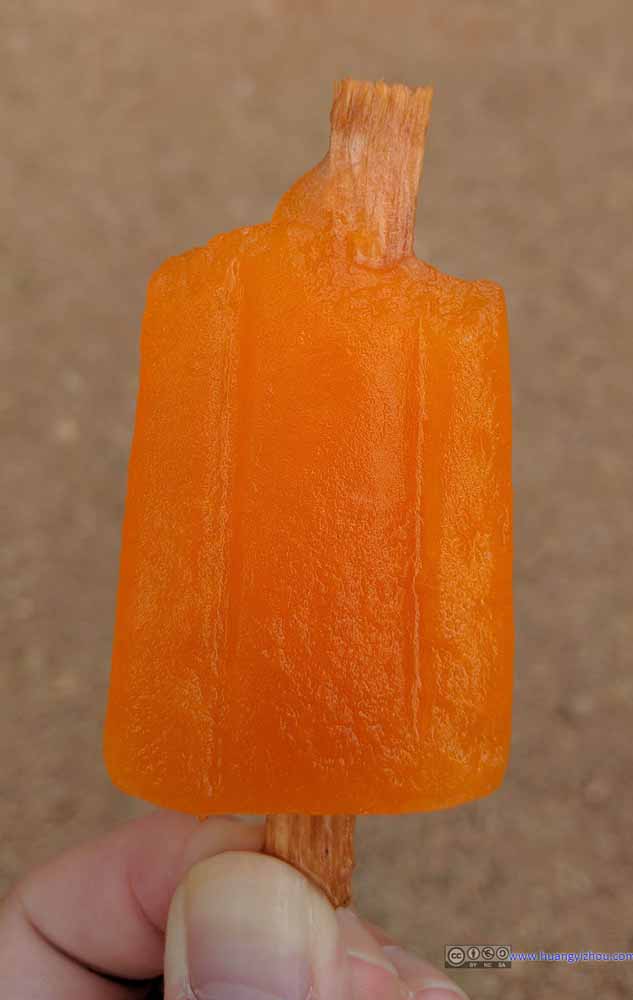
PopsicleThere were people on bikes selling popsicles, so we each bought one. Well, this popsicle wasn’t made of very good material (I guess they just dipped wooden sticks into juice sugar water and let it freeze, which wasn’t the most modern way to make popsicles, but typical of underdeveloped Sri Lanka I guess), so before I could finish this popsicle, its sticky water was all over my hand, and that’s gross.
Council Chamber
An inscription found on the stone slab at the upper level of the flight of steps of the building identifies the building as Raja Vaishyabhujanga Mandapa, the council chamber of King Parakramabahu the Great (1153-1186AD). It’s famous for its three consecutive tiers faced with decorated stone tablets of elephants in the bottom, lions in the middle and dwarfs in the top. The roof supported on stone pillar so the upper most tier probably had wooden members and covered with clay tiles. The investigations have revealed that the present form of the building may have been a result of a renovation, probably during the Dambadeniya period (13th Century).
Then we headed for Bathing Pool which was on the south-east corner of the citadel. There were lots of local people and the stairs to Bathing Pool was narrow, so this took us some time.
Bathing Pool
Shiva Devalaya No.1
The ancient name and the builder of this Hindu shrine are not known. But according to the style of architecture this may have been built somewhere in the 13th century AD. As it is located between the citadel and the Sacred Quadrangle it may have been regarded as an important shrine at the time. The main object of worship is the stone lingam in the inner sanctum.
Sacred Quadrangle
A compact group of ruins within a raised-up platform bounded by a wall, most concentrated ruins of the city.
Thuparamaya
Although traditionally known as Thuparama its ancient name or builder is not known. This is the only monument among these in Polonnaruva where the roof is well preserved. Structures of this type where the side walls and the roof are made of bricks without using wood, are known as gedige. The ornamentation of the exterior walls shows the influence of South Indian architecture, vimana-panjara-kudu design.
Nissanka Latha Mandapaya
According to an inscription in situ this pillared structure could be identified as the Nissankalata Mandapa. The unusual pillar type stimulates a lotus stalk with flower as the capital. Another inscription confirms that it is here that King Nissankamalla (1187 – 1196 A.D.) listened to Pirith, recital of Buddhist scriptures. In the center is a small stone-cut stupa, having truncated top perhaps to receive the relic casket during pirith chanting. This was probably covered with a roof. Pillars of similar design are also found in a building near Satmahal Prasada.
Velikkara Inscription
The Velaikkaras rebelled against King Vijayabahu (1055-1110 A.D.) in his 30th year refusing to fight against the Colas and they were punished. It seems that Velaikkaras provided protection to the Temple of Tooth even during the early period of Vijayabahu due to the mention of construction of some buildings by them around the Temple of Tooth. Perhaps after the rebellion, they were removed beings the guards of the Temple of Tooth. After the death of Vijayabahu, there were several internal struggles and it is very likely that Mugalan Thera decided to engage Velaikkara forces again, for the protection of the Tooth Relic and the Bowl Relic of the Buddha, during that turbulent period. The purpose of this inscription is to give an assurance by the Velaieckara Soldiers that they would protect the sacred relics and the properties no matter what happened.
Click here to see contents of the inscription.
The Temple of Tooth Relic built by the Commander Nagaragiri Deva on the instructions of King Vijayabahu and the surrounding shrines founded by the Velaikkaras shall be protected by the Velaikkara forces unto the dissolution of the world.
Obeisance to the Buddha! In the prosperous island of King Sirisangabo, Vijayabahu scion of the lineage of Iksavaku of the Solar Race gaining victory over many an enemy, entered Anuradhapura. At the request of the Buddhist monks he put on the crown in order to protect the Buddhist Religion. The king invited monks from Aramana (Myanmar) and purified the three Nikayas. The king who brought Lanka under a single canopy made donations to the three Nikayas three times equivalent to his own weight (coins), reigned 55 years and lived 73 years.
The Tooth Relic and the Bowl Relic which was at the Uttaramula of Abhayagiri Vihara was brought to Pulanari or Vijayarajapura and permanently kept at the Temple of Tooth Relic. The first anointment ceremony (of Vijayabahu) was held there (according to the Cullavamsa in the 18th year at Polonnaruva) which also house the colossal Buddha Statue, in which is held annually the ceremony of unloosening of sacred eyes and applying collyrium to them.
Rajaguru Mugalan Thera of Uttaramula, who is virtuous and learned, associating himself with the dignitaries came to the spot, called us and said “The Tooth Relic Temple should be under your custody’.
Thereupon we convened a meeting along with our elders and named the shrine ‘The great Temple of Tooth Relic belonging to three divisions of Velakkaras’ and decided that it will remain as our charitable institution under our own custody. For the protection of the shrine one servitor from each of the (three divisions) was appointed and one veli of land was allocated for the maintenance of each person, We shall protect the villages, the retainers, and the property belonging to the shrine, as well as those who enter for refuge, even it is detrimental to us. We shall endeavor as long as our lineage exists and even if we suffer deeper than we have suffered already.
To attest this we have delivered over (to Mugala Thora), having had it engraved on the copper plate and also engraved on a stone so that it may last as long as the sun and the moon endure.
Accordingly anyone who infringes (what is stated above) or consent to infringes or tell others to infringe becomes our enemy, who has committed an offence against Matantra, committed five great sins, a great sinner who had appropriated what was offered to gods, committed an offence against the (Triple) gem, who will enter the hell.
Vatadage
This is one of the architectural marvels in Polonnaruwa. This may have been originally used as the Temple of the Tooth as there is mention of a round relic house built by King Parakramabahu the Great (1153 – 1186 AD). But according to the galpota (stone book) inscription, King Nissankamalla (1187 – 1196 AD) has built a Vatadage within the quadrangle naming it Ratnagiri Vatadage, which suggests that at least some renovation or reconstruction work has been done here during King Nissankamalla’s reign. Just as other vatadages in the island, this too appears as a round building enclosing a stupa at its center. It has taken the present form probably as a result of the renovations or reconstruction works done in the region of King Nissankamalla or during the Dambadeniya period (13th century AD). The roof supported on stone pillars probably had wooden members and covered with tiles. The moonstone and two guardstones to the north and east of the upper terrace respectively may be cited as the best examples of their kinds in Polonnaruwa. It’s said that there were no bulls in these moonstones, because during Polonnaruwa times Hindu had been introduced to Sri Lanka, thus bulls as a symbol of death were no longer appropriate in moonstones as they were considered sacred in Hindu.
Right next to Vatadage was Hetadage.
Hetadage
This is the Temple of the Tooth Relic built by King Nissankamalla (1187–1196 AD). It is said that the building got its name because it was built in 60 hours. It has been a two storied building and like most buildings the upper floor may have been wooden and may have contained the Sacred Relic. Three inscriptions have been found of King Nissankamalla of which one has the words “Nissanka Hatadage”, the others have his altruistic activities and advice given to the community of Buddhist monks. The roof may have had wooden beams and covered with clay.
Next to these two was Atadage, the oldest building in the Sacred Quadrangle and Temple of the Tooth built by King Vijayabahu the Great (1055 – 1110 AD). There were quite some people in it, so we didn’t take any photos.
Satmahal Prasada

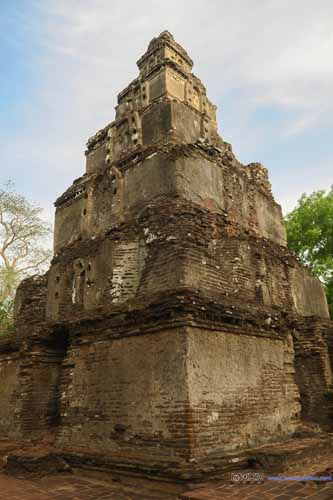 Satmahal PrasadaAlthough known as Satmahal Prasada its ancient name or other facts of this edifice are not known. Despite the fact that there is reference in the Mahavansa that King Parakumbahu the Great (1153-1186 A.D.) built a Satmahal Prasada in Polonnaruwa there is no positive evidence that it is this building. Built in the stepped pyramidal form‚ this seven-storied structure may be a stupa of a rare kind. It bears a close similarity to the stupa at Wat Kukut in Lamphun‚ Thailand. The architectural features common in Southeast Asia countries are also visible in this building.
Satmahal PrasadaAlthough known as Satmahal Prasada its ancient name or other facts of this edifice are not known. Despite the fact that there is reference in the Mahavansa that King Parakumbahu the Great (1153-1186 A.D.) built a Satmahal Prasada in Polonnaruwa there is no positive evidence that it is this building. Built in the stepped pyramidal form‚ this seven-storied structure may be a stupa of a rare kind. It bears a close similarity to the stupa at Wat Kukut in Lamphun‚ Thailand. The architectural features common in Southeast Asia countries are also visible in this building.
Gal Potha
This giant inscription which assumes the shape of a palm-leaf manuscript in stone has been a work of King Nissankamalla (1187 – 1196 AD) and it is the largest stone inscription so far discovered in Sri Lanka. The inscription itself says that this large stone block was transported from Mihintale, some hundred kilometers away from Polonnaruwa. It describes the genealogy, heroic and altruistic deeds of King Nissankamalla. The letters of the inscription were gilded with molten iron. There may have been a roof over the inscription for its protection. The figure of the woman on the side face of the stone on whom two elephants are sprinkling water has been identified as Goddess Gajalakshmi (Goddess of Prosperity).
As we were about to leave the Sacred Quadrangle, we encountered this groups of monkeys, who certainly did enjoy their days among these ruins. They got plenty of food from the tourists, no predators as these grounds were sacred.
Rankoth Vihara
After the three great dagobas at Anuradhapura this is the next biggest in Sri Lanka. There is an inscription nearby that states King Nissankamalla watched the workmen constructing the dagoba. It’s in clear imitation of the Anuradhapura style, and stands 55m high. This dagoba’s name in Sinhalese means “Gold Pinnacled Stupa” as when it’s first constructed, its top with gilded with gold.
One thing not so pleasant about Rankoth Vihara was that no shoes were allowed in its grounds, but its grounds were sprinkled with gravel that really stung. And since it’s quite a large pagoda, it took quite some time to circle it.
Then, our driver drove us Northern Polonnaruwa ruins, which was a mistake given that we wanted to visit Monk Hospital which wasn’t very far from Rankoth Vihara. But anyway, that’s what we did on that day.
Northern Polonnaruwa Ruins
Lankatilaka Vihara
This is the vaulted type (gedige) image house built by King Parakramabahu the Great (1153 -1186 AD) and it is the largest image house built in ancient Sri Lanka. The two pylons at the entrance and the giant standing Buddha image inside signify its scale. There is evidence that the interior and exterior walls had been adorned with paintings. The stucco relief sculpture on the exterior walls show south Indian influence. Obvious indications are there that this image house had been renovated during the Dambadeniya period (13th century AD). The building with stone pillars in front of the image house may have been a pavilion for hevisi drummers.
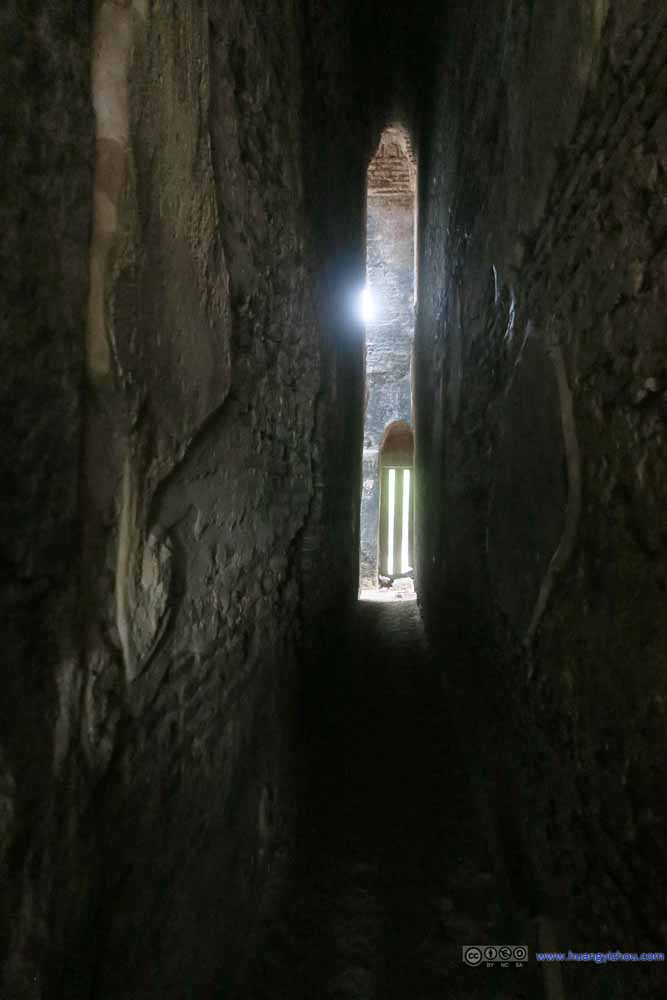
Passage
This is the Meditation Road behind the Buddha Statue, that monks used to walk three times a day while meditating.
Next, we made our way to Badda Sima Prasadaya.
Badda Sima Prasadaya
This is the uposathagara (chapter house) of the monks of alahana Parivena where they rehearsed the code of discipline (especially the pati mokka). The pillars and brick walls suggest that there had been a storied building. This is the largest of the uposathagaras in the island and according to Mahavamsa was twelve storied. The central platform within the building was to locate the relic casket while four monks seated on the stone pedestals facing the cardinal directions read the code of discipline.
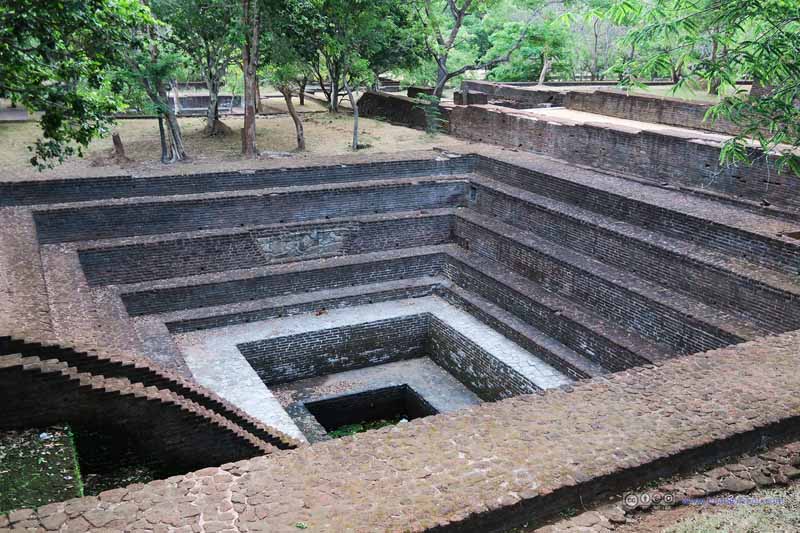
Water TankAmazingly the bricks of this water tank were still very well-preserved, and there were lotus blossoming in the bottom of it.
After that, we made our way to Monk Hospital.
Monk Hospital
This 12-Century Monk Hospital had 15 rooms and halls, with medieval medical equipment and herbal medicine and human-sized stone beds unearthed.
But since it was lying in ruins, which wasn’t any different than other ruins, we could hardly tell this used to be a hospital. It’s just the pit by its side giving us quite some room for imagination.
On our way back, we found these residential units in different sizes, as we joked (or imagined) that they were for monks of different ranks.
Kiri Vehera
Nothing is known about the ancient name or the builder of this stupa popularly known as Kiri Vehera. But it is speculated that this is the work of Queen Subhadra, a consort of King Parakramabahu the Great (1153 – 1186 A.D.). The present name probably derives from the fact that its lime plaster of the dome is better preserved than of most other stupas in Polonnaruwa.
However, I searched online and found that this stupa was recently painted (at least in the last decade). Before that, it’s the same brown ruin as most other brick structures in the city.
After that, we walked past parking lot to the last stop of the day, Gal Vihara.
Gal Vihara
The Gal Vihara consists of four separate images, all cut from one long slab of granite. The images consist of a large seated figure, another smaller seated figure inside an artificial cavern, a standing figure and a reclining figure. These are considered to be some of the best examples of ancient Sinhalese sculpting and carving arts.
Each of the images have been carved in a way that uses a maximum possible area of the rock, and their heights seem to have been decided based on the height of the rock itself.
This standing Buddha in Gal Vihara, Polonnaruwa is 7m tall and is said to be the finest of the series; the unusual position of the arms and sorrowful facial expression led to the theory that it was an image of the Buddha’s disciple Ananda, grieving his master’s departure for nirvana, since the reclining image is next to it. The fact that that it had its own separate enclosure, and the later discovery of other images with the same arm position, has discredited this theory and it is now accepted that all the images are of the Buddha.
The great reclining image of the Buddha entering nirvana is 14m long. The beautiful grain of the stone of the image’s face is to many people the most impressive part of the Gal Vihara group. Notice also the subtle depression in the pillow under the head and the sun-wheel symbol on the pillow end.
Two splendid seated Buddha’s complete the group. Both are sculpted in “dhyani mudra” (meditation posture). The smaller seated Buddha is cut into in a cave-like recess. The larger seated Buddha is framed by Sanchi-style arch, with tiny bodhisattavas looking down on him from their celestial dwellings-perhaps showing a touch of Mahayana Buddhist influence, with its belief in Bodhisattvas.
After that, we headed back to the parking lot and were ready for Sigiriya.
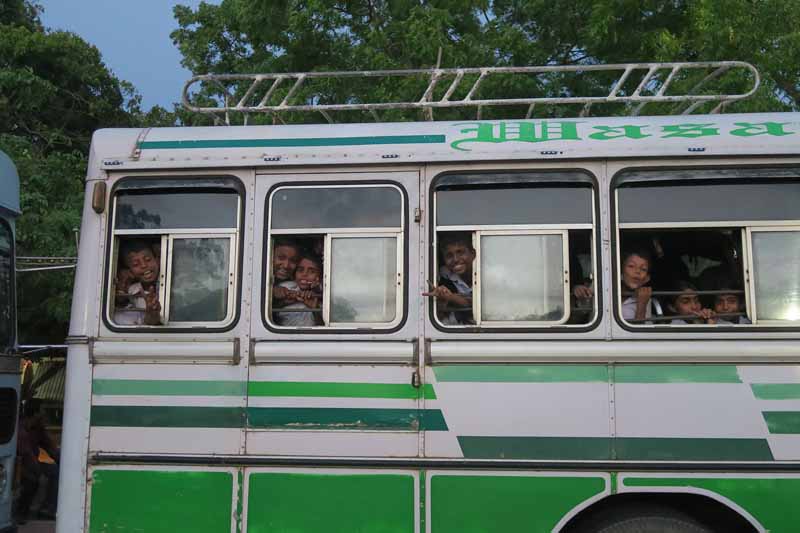
Children on SchoolbusAs we were leaving about the same time with these schoolboys. But it seemed that their energy for the day hadn’t run off yet, as they were singing loudly and cheerfully in the overcrowded bus (that’s what I would call “rocking the bus”). As I approached them, a camera-holding foreign figure certainly captured their attention (and the attention of boys on a nearby bus). Enchanted by such a dynamic crowd, I took this photo of them under their request while capturing youth’s unceasing eager for exploration into the unknown and unseen. evident in their race to stretch their heads out of these rather limited school bus windows, and flattering me in the process. However, that sense of honor quickly wore out as a cunning boy among them used his fluent English to ask me for money.
Since we were off to a late start today, it’s almost 7pm when we left the ruins of Polonnaruwa, and darkness was falling. The country road of Sri Lanka at night could be dangerous and should best be avoided. Today it’s the first and only time that we were driving in darkness. Unfortunately, as our driver rushed us to Sigiriya we were involved in a minor accident with a motorist. Nobody was injured, but this was a sign of how dangerous roads in Sri Lanka can get at night.
Since we had a rather flexible plan for these two days, and there were plenty of budget hotels around Sigiriya, we didn’t book our overnight accommodation in advance. We asked our driver to take us to a hotel, which came out to be decent. And that’s the end of the day.
END
![]() Day 5 of Sri Lanka Trip, Polonnaruwa on July 15, 2017 by Huang's Site is licensed under a Creative Commons Attribution-NonCommercial-ShareAlike 4.0 International License.
Day 5 of Sri Lanka Trip, Polonnaruwa on July 15, 2017 by Huang's Site is licensed under a Creative Commons Attribution-NonCommercial-ShareAlike 4.0 International License.

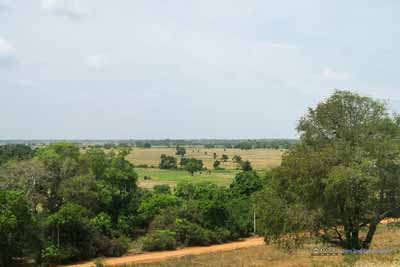
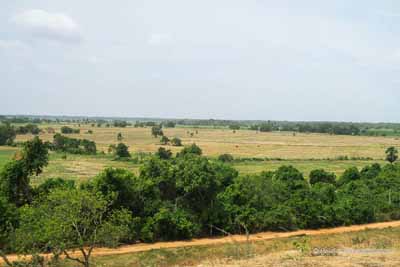
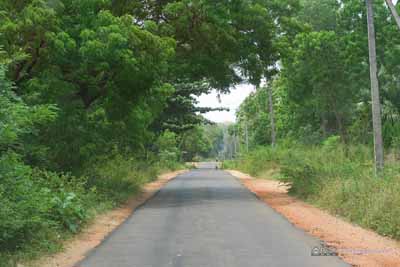
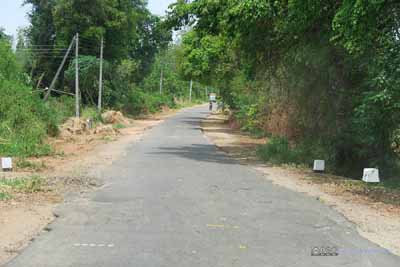
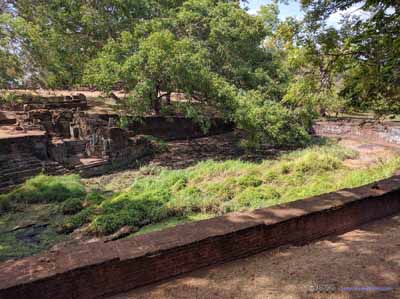
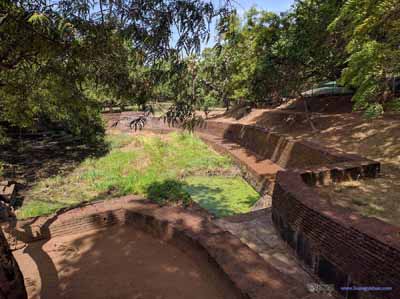
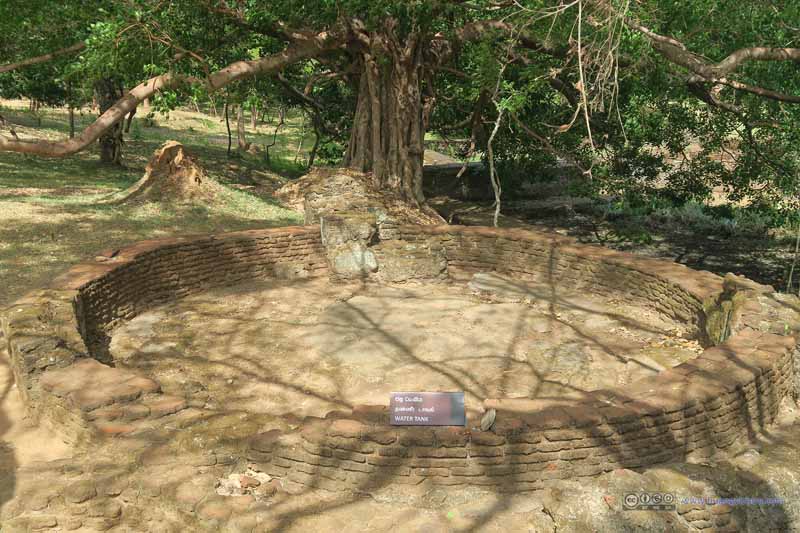

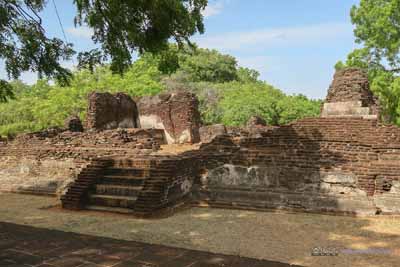
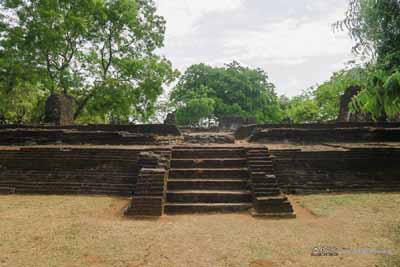
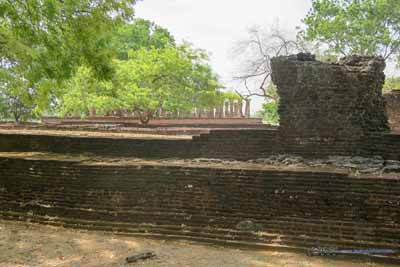
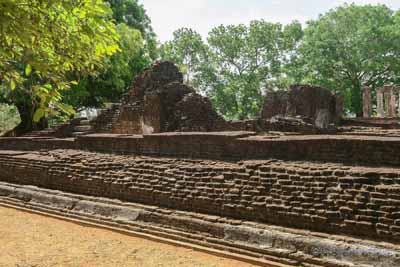
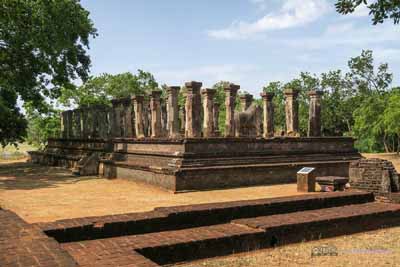
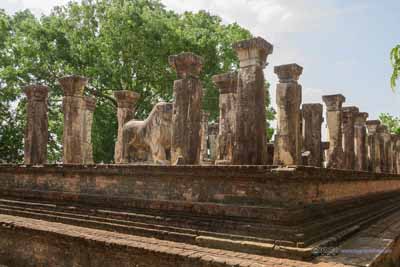

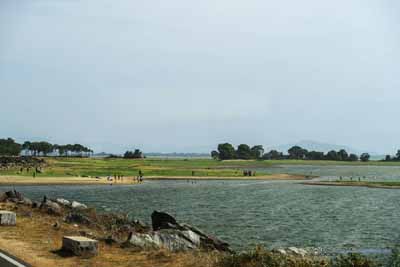
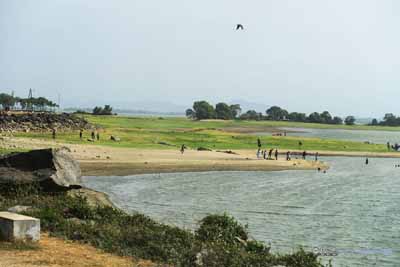

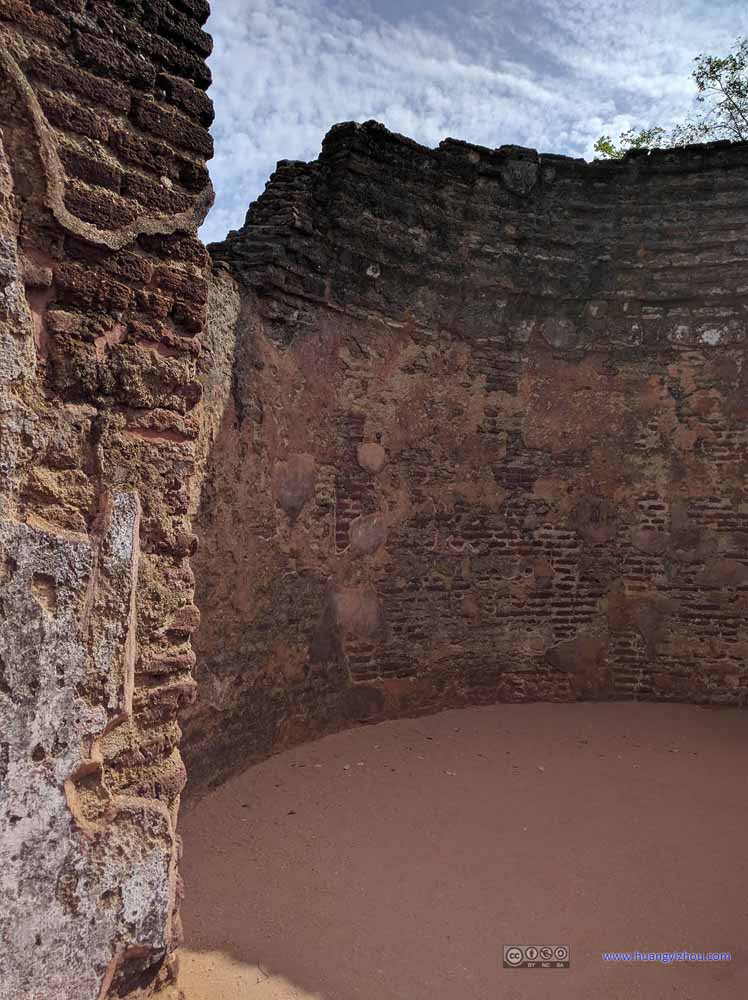
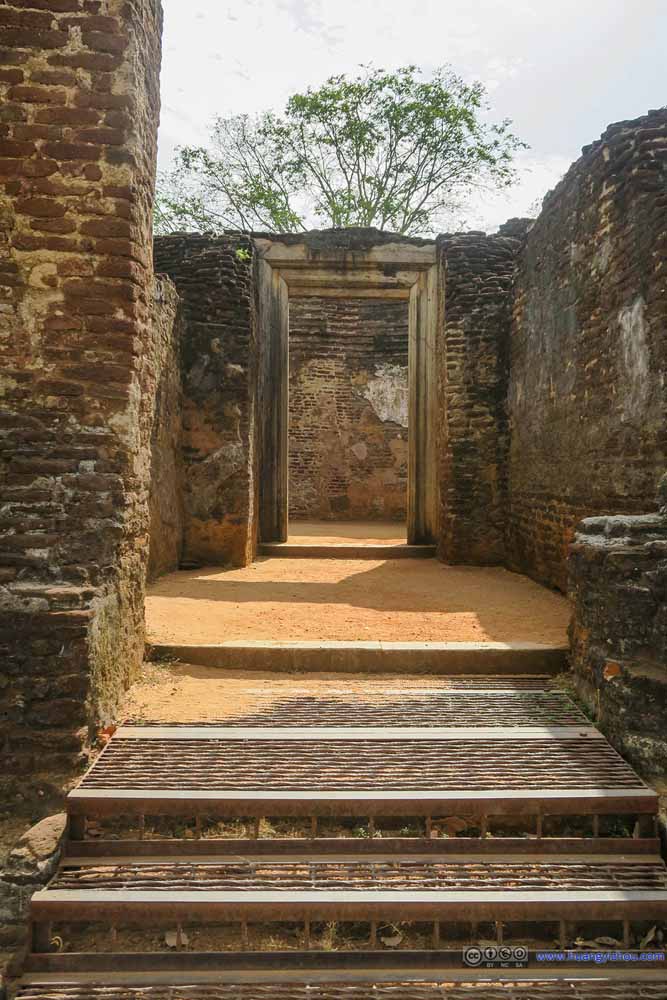
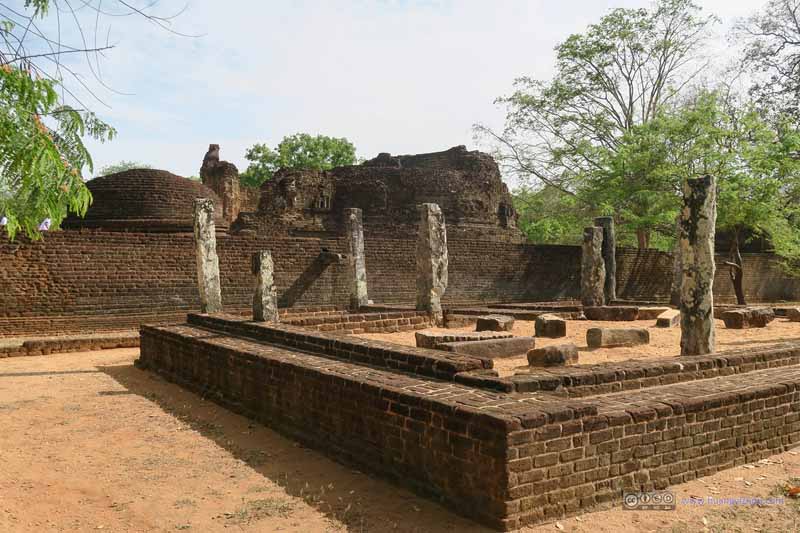
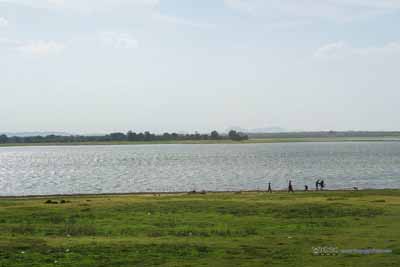
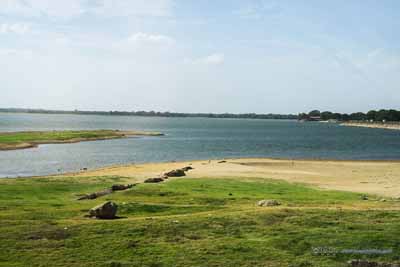
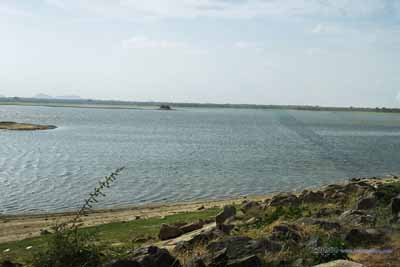

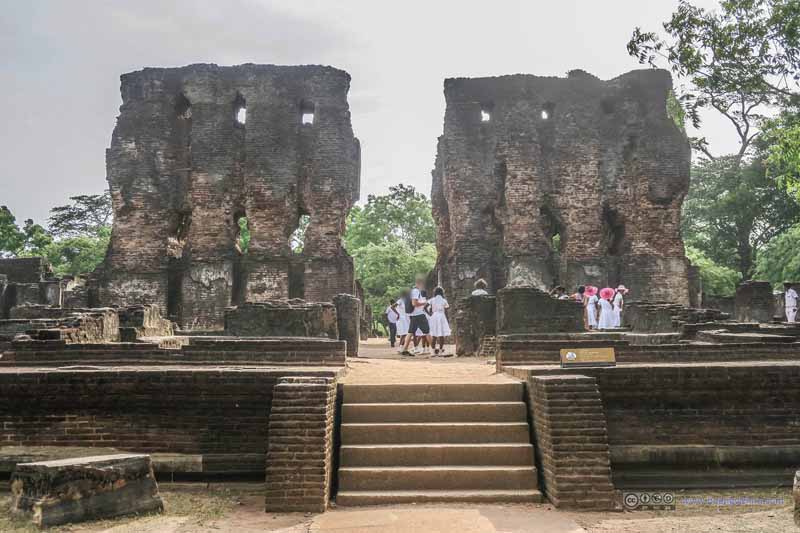
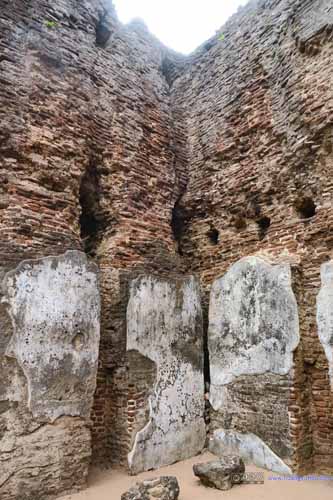
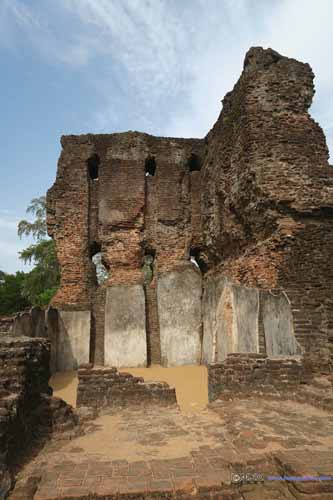
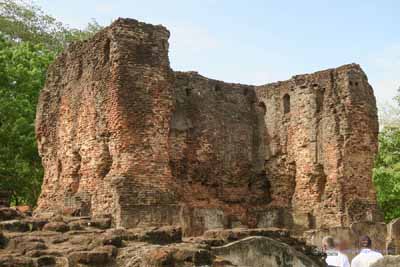
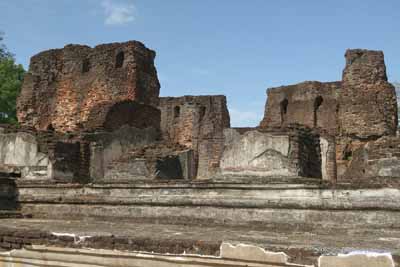
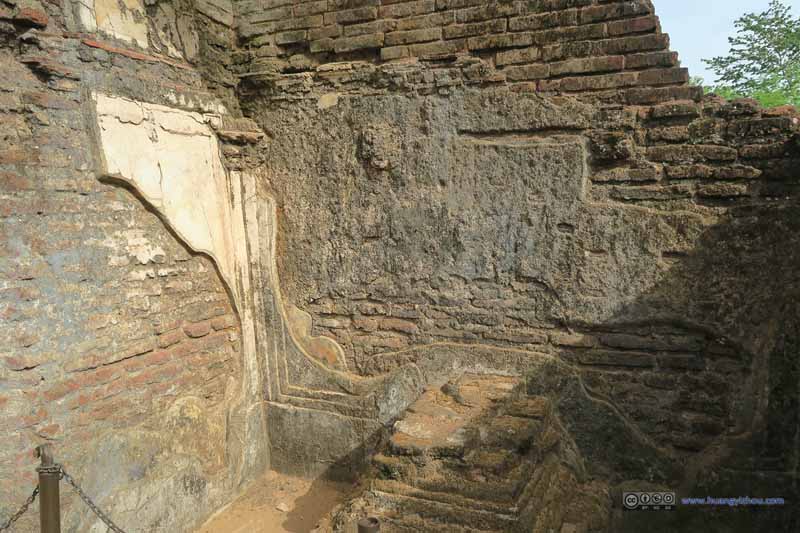
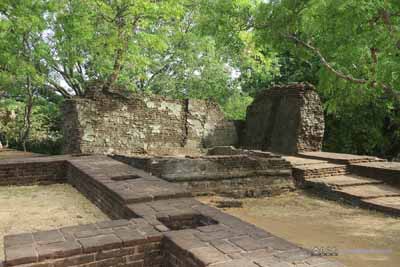
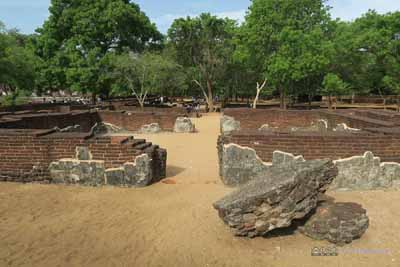



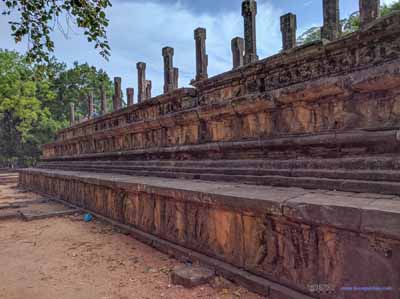



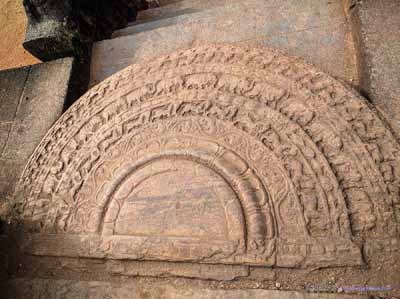


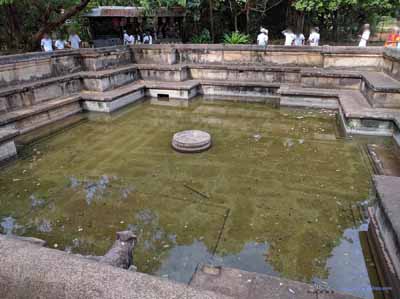
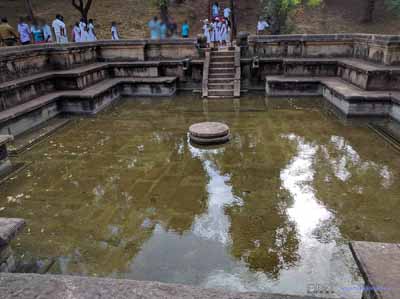
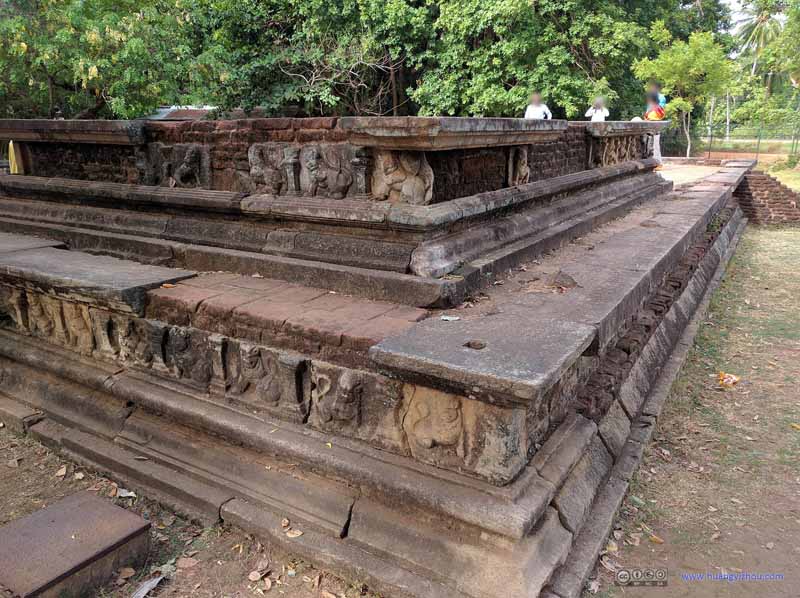

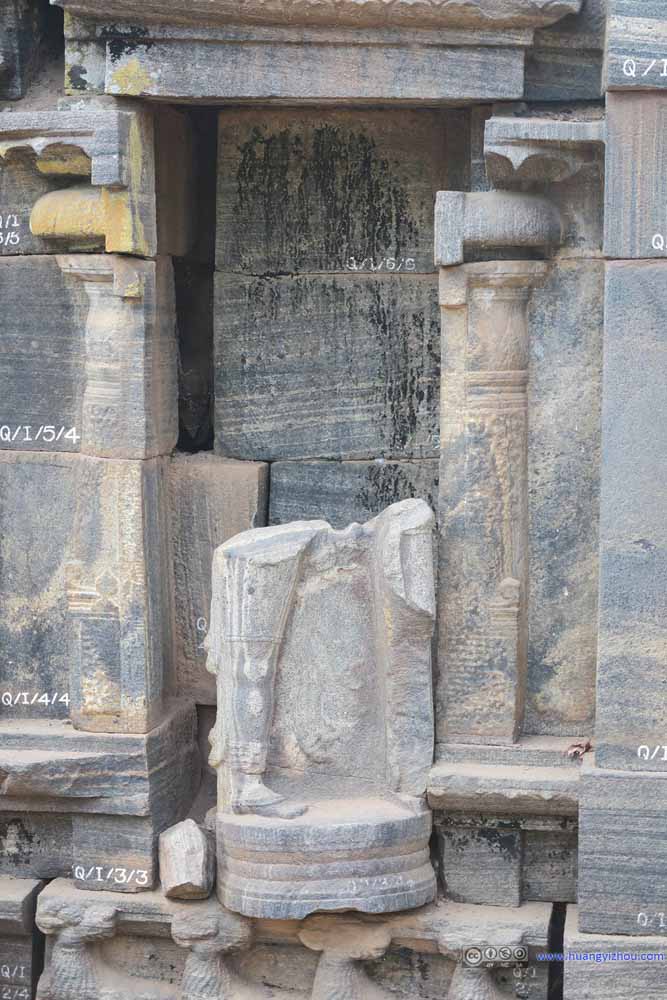
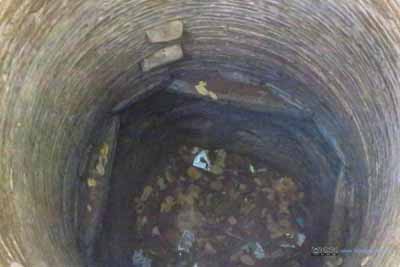
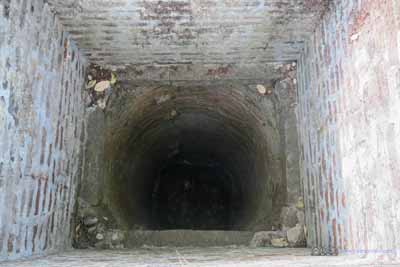



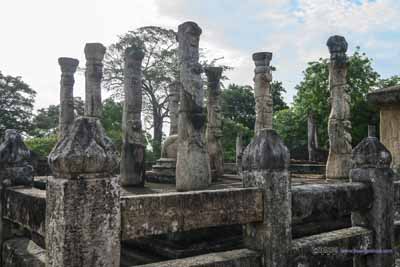
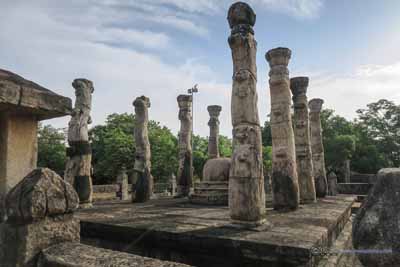

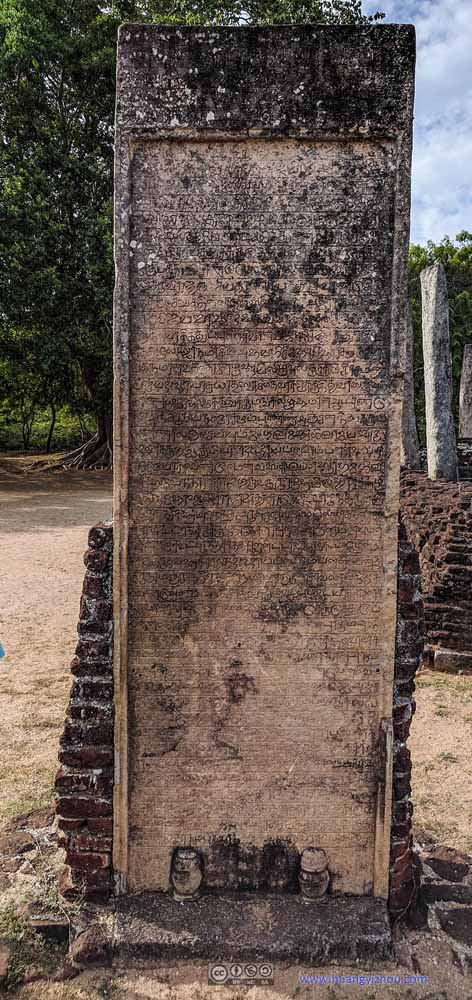
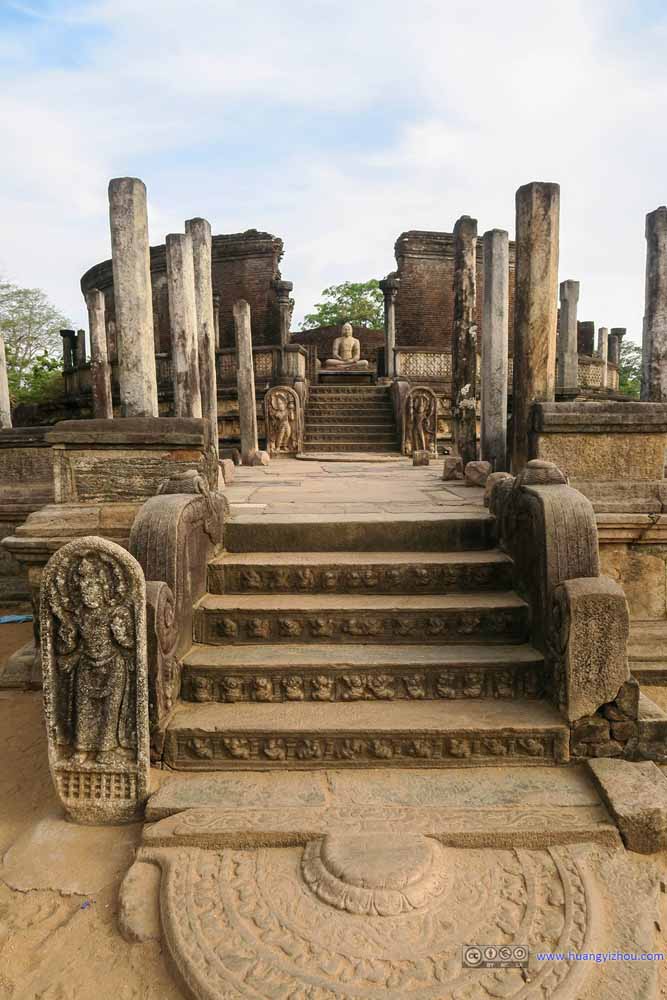
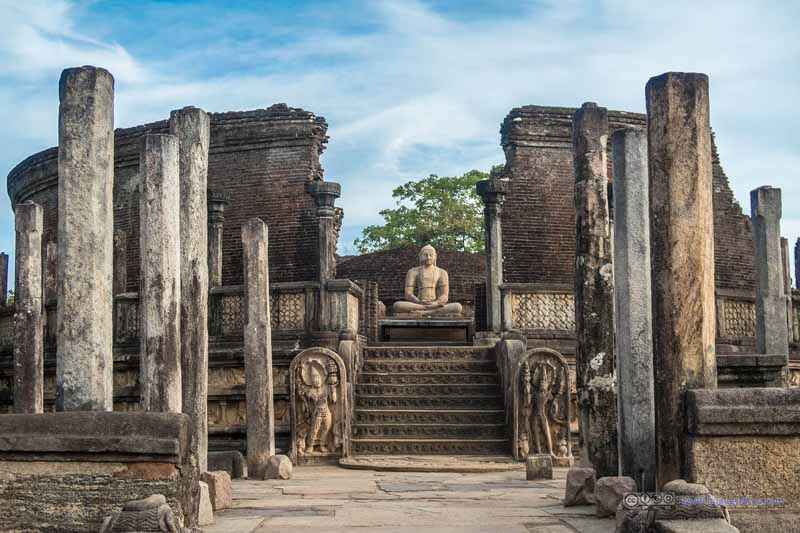
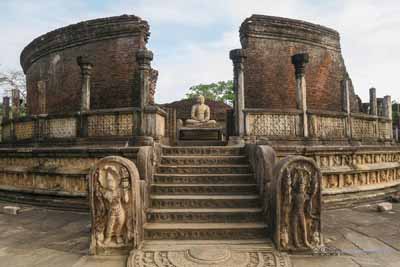
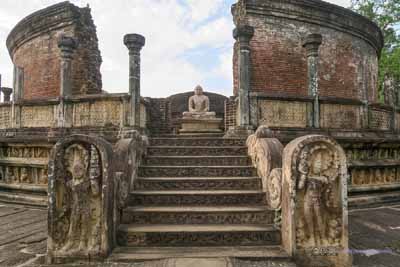

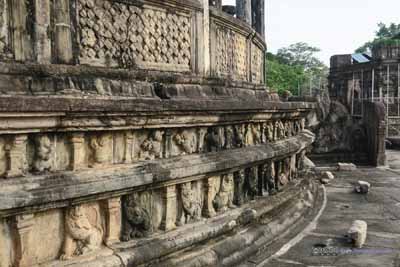
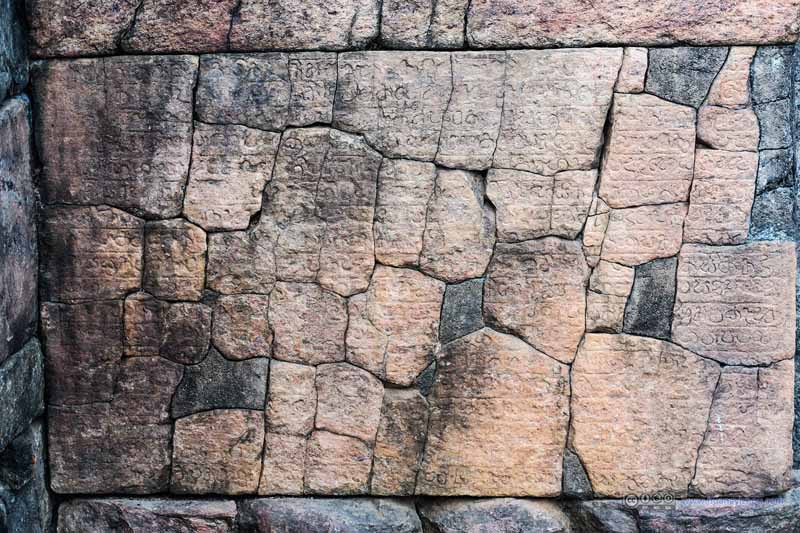
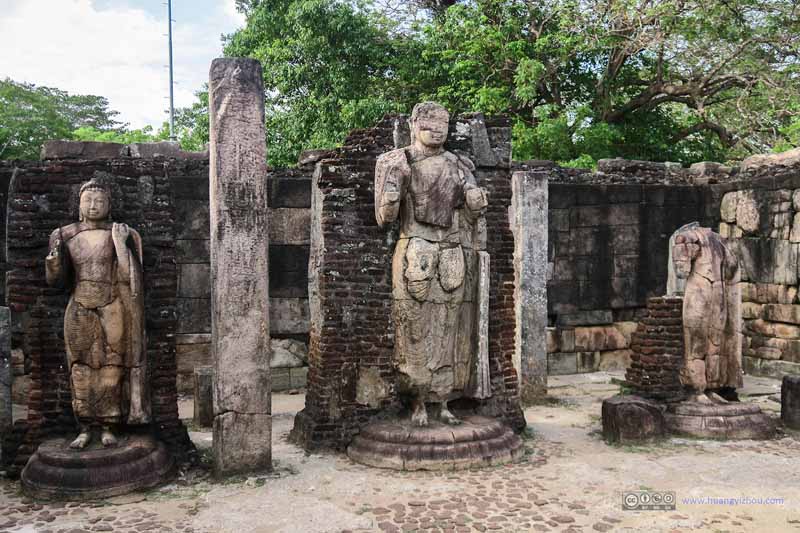
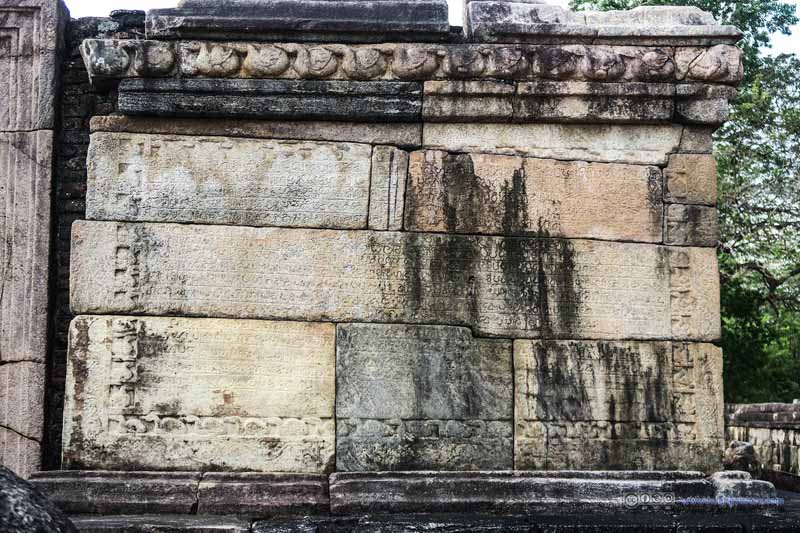
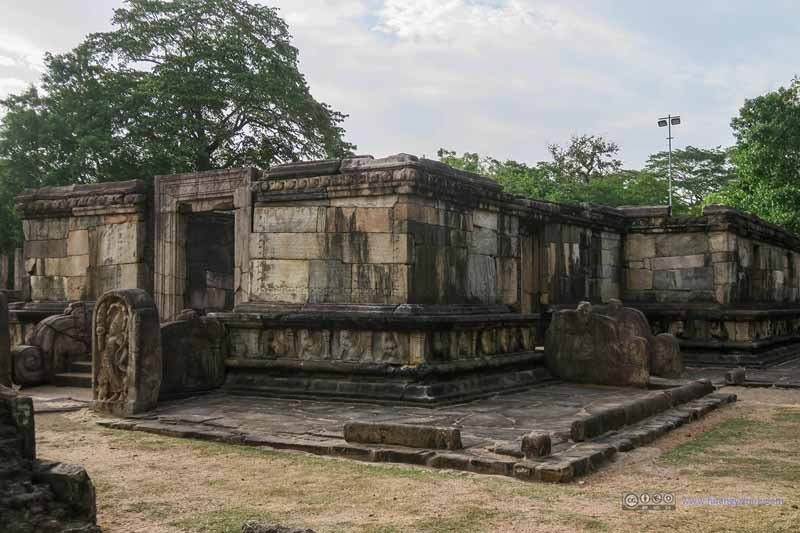
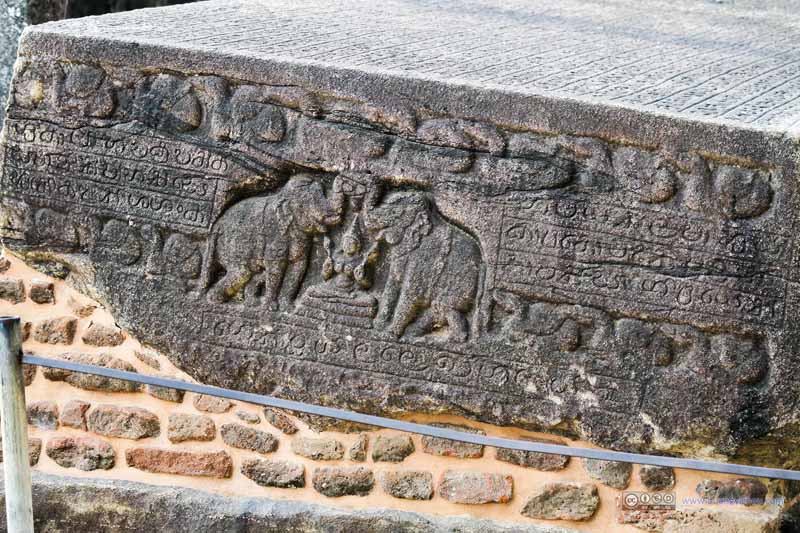
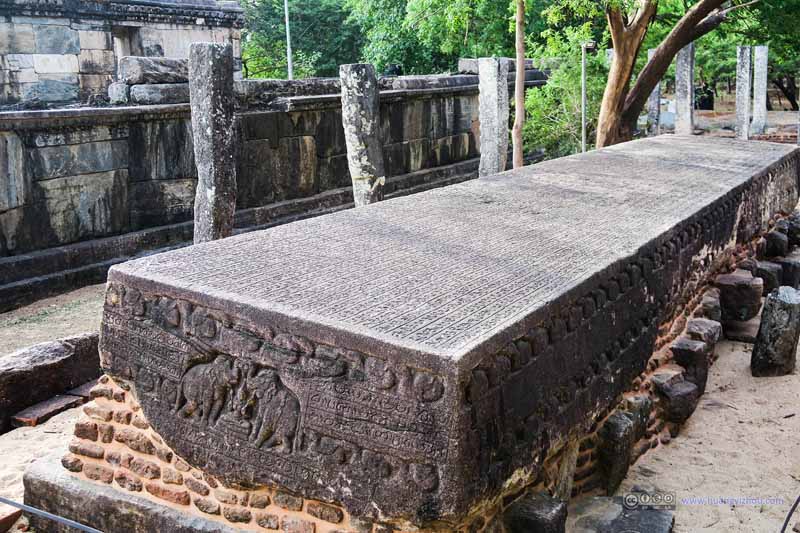
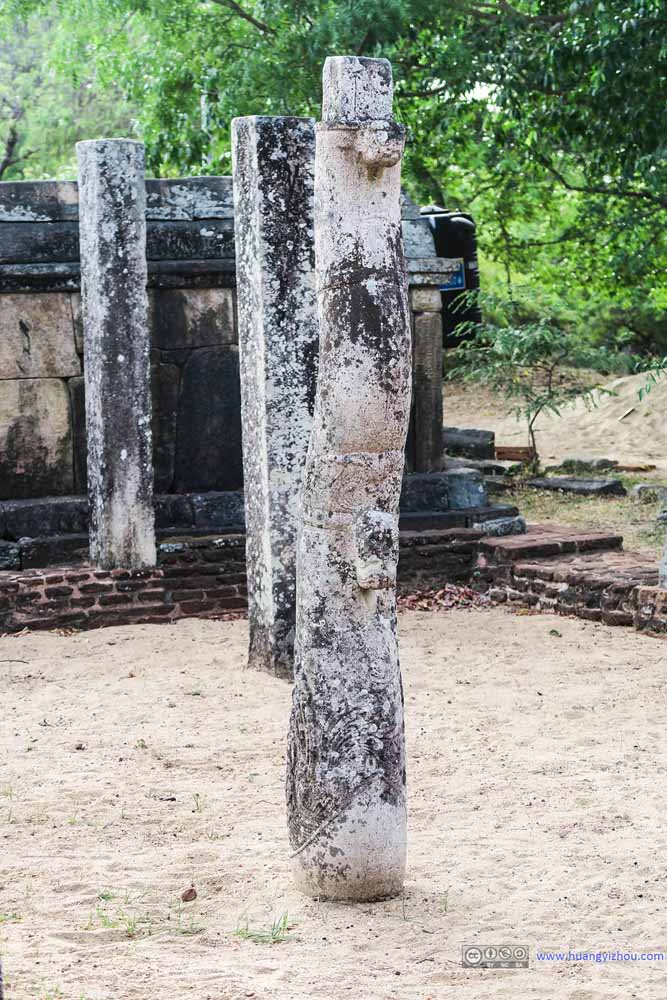
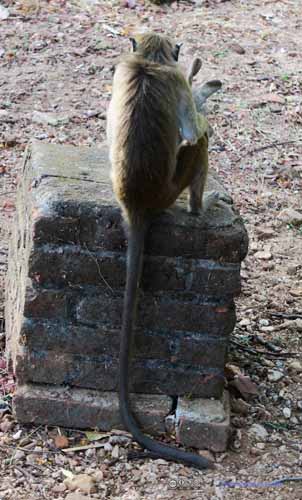

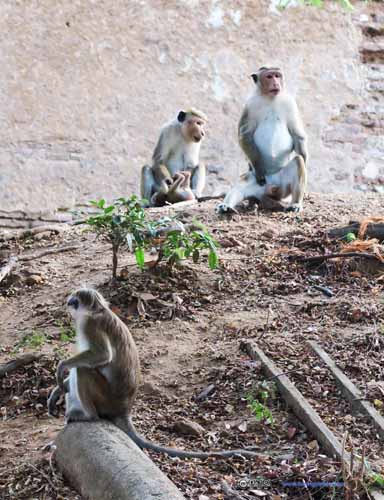
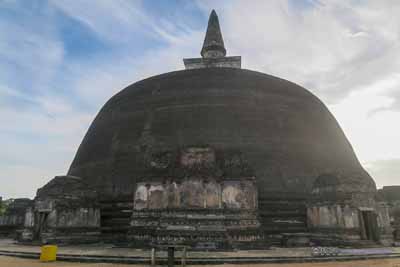
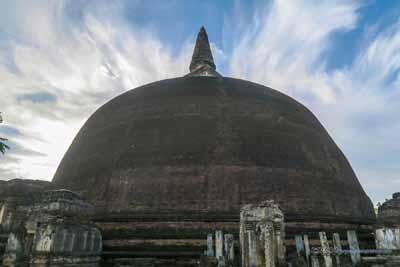
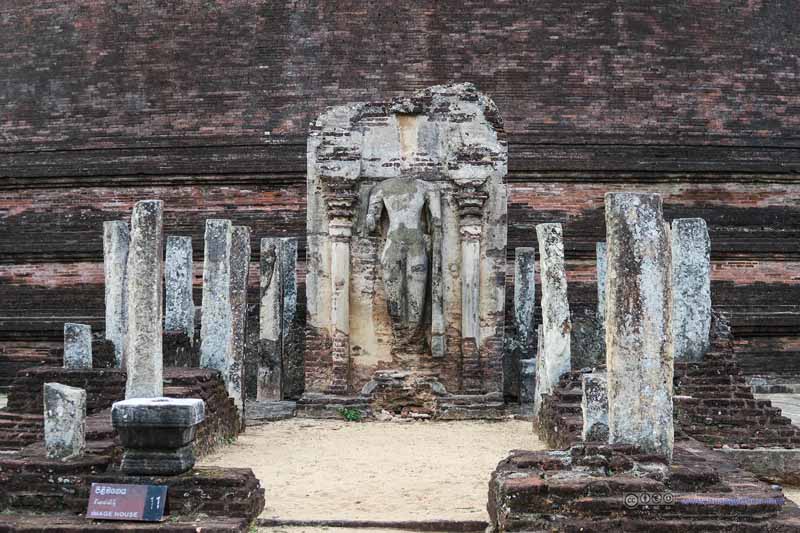
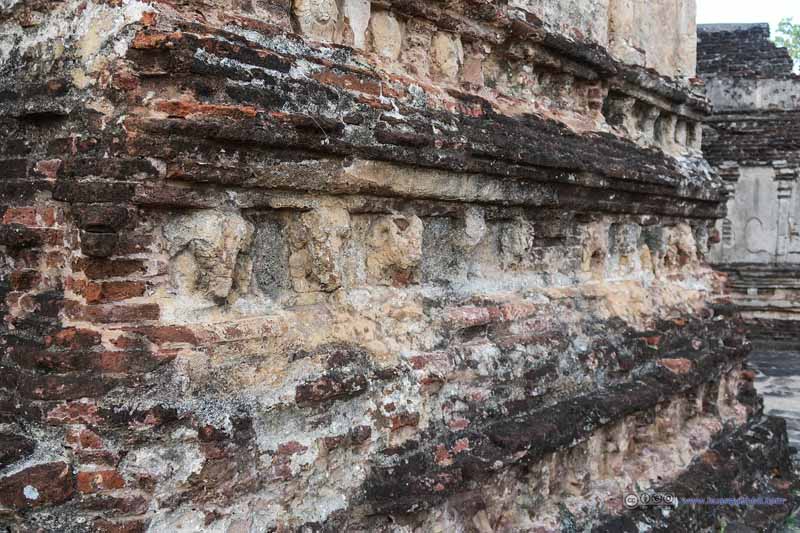
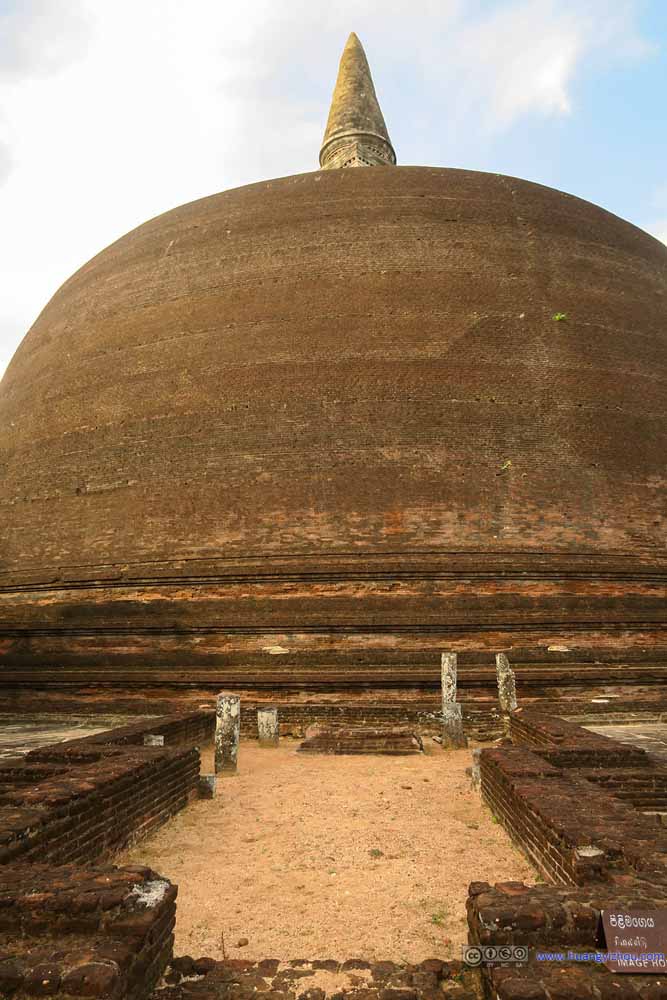
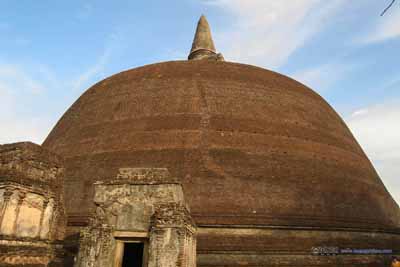
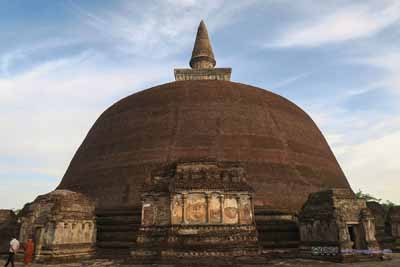
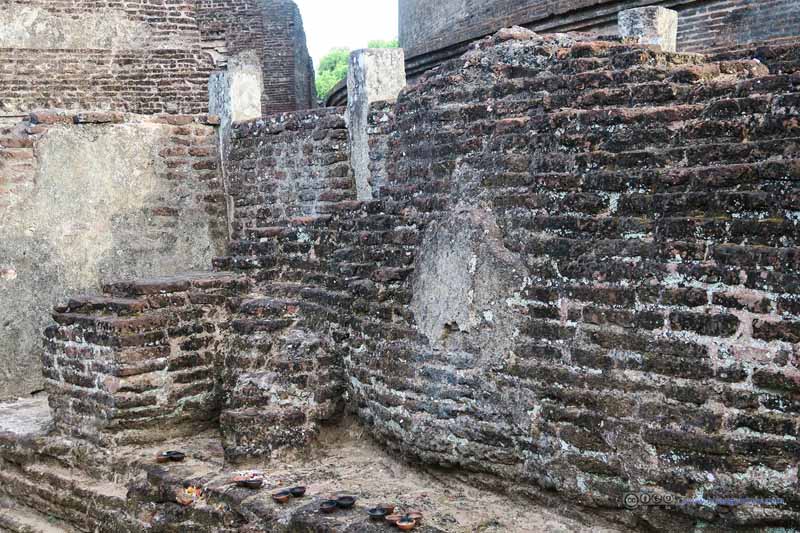
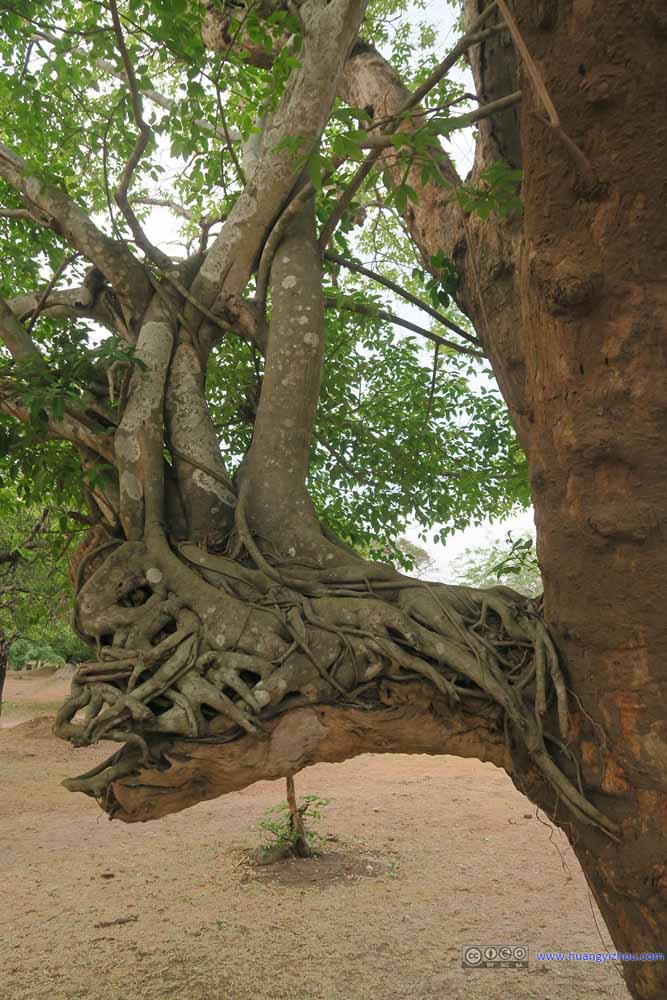
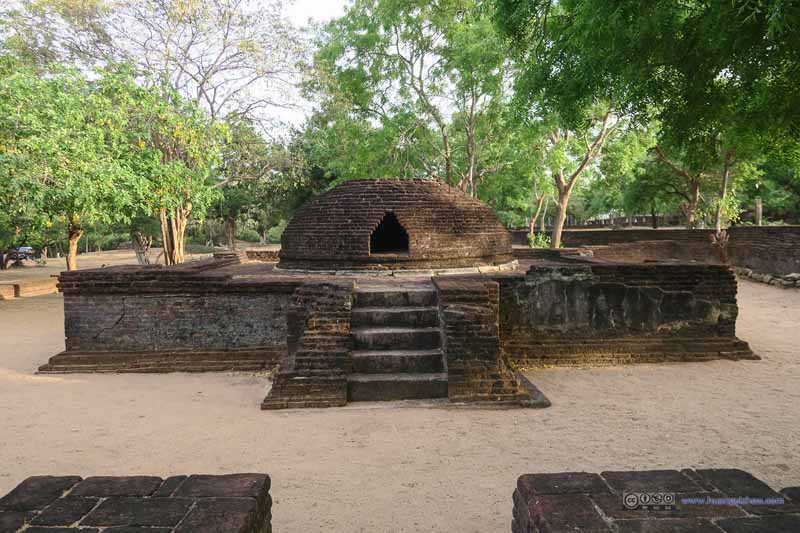
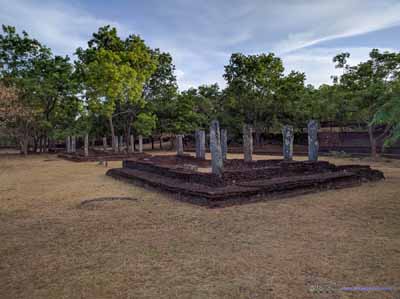
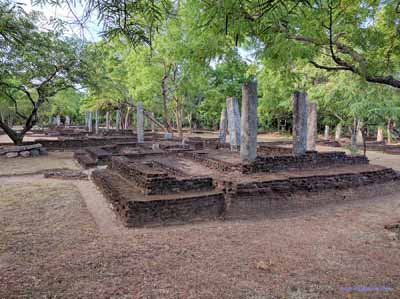
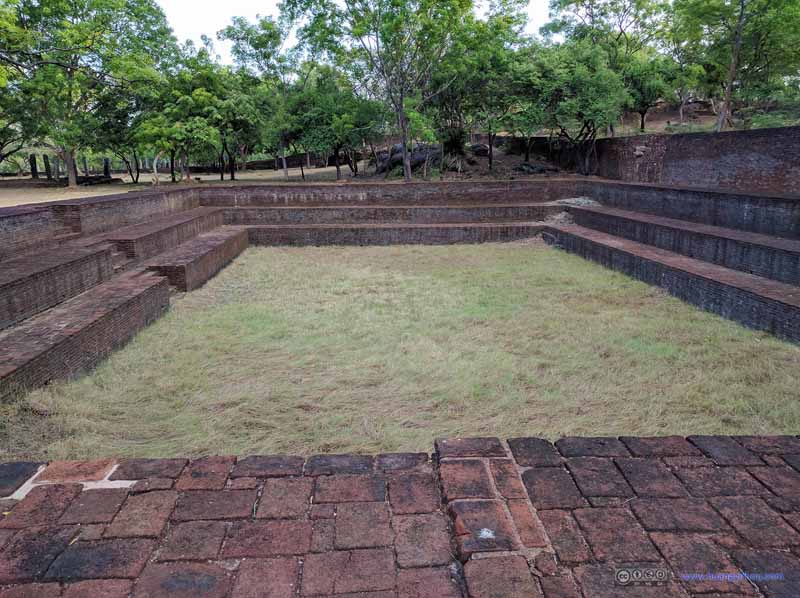
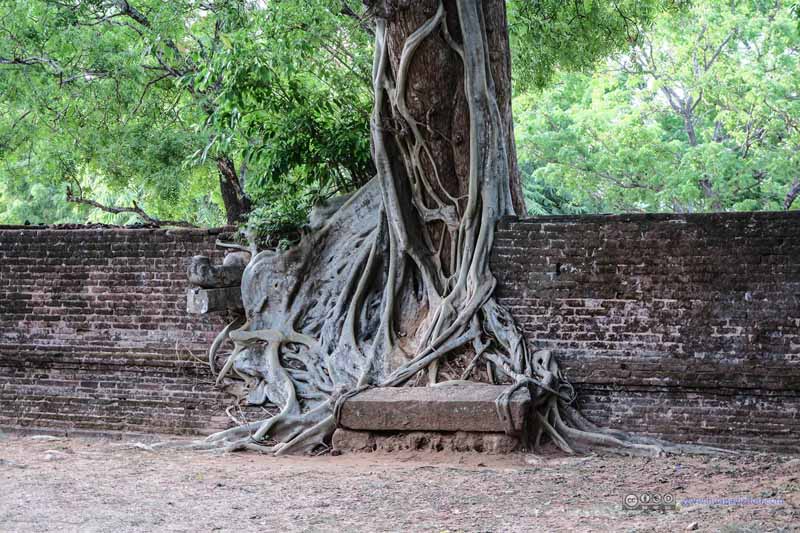
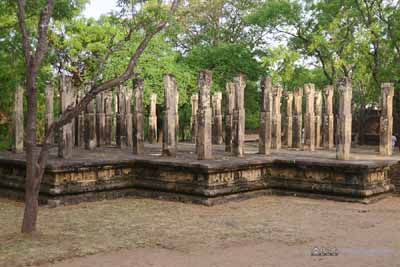

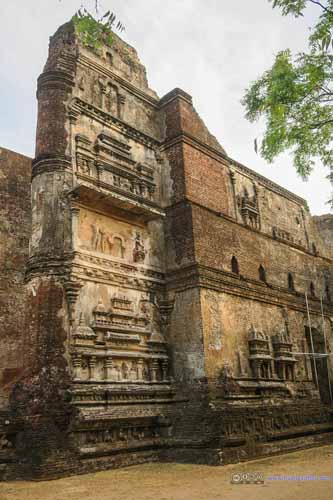
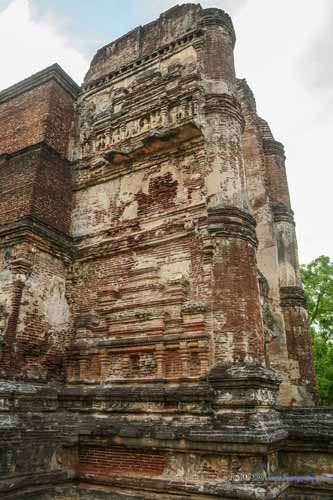
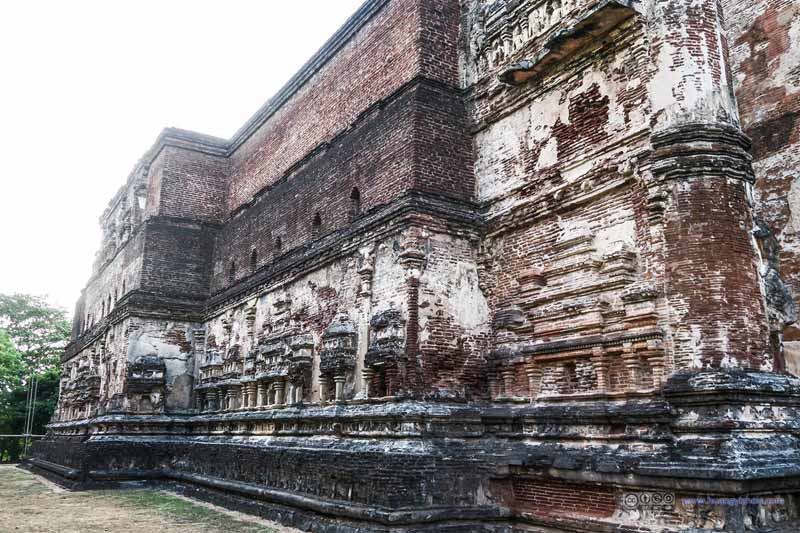
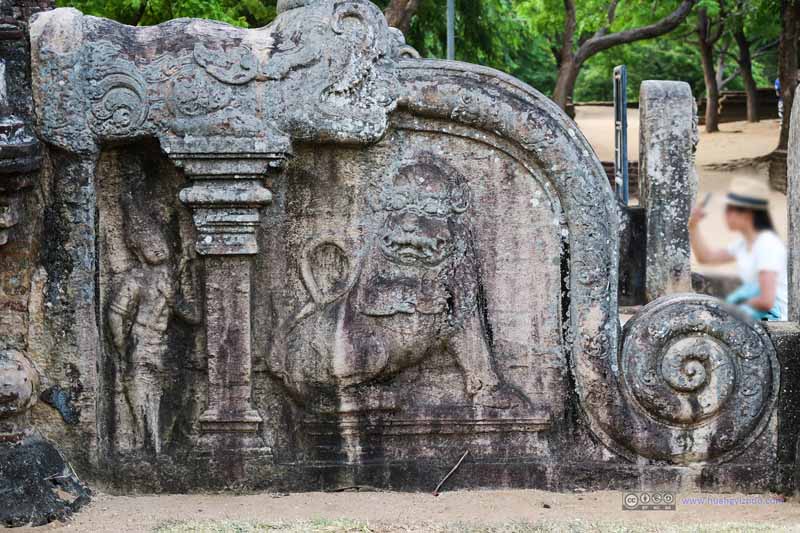
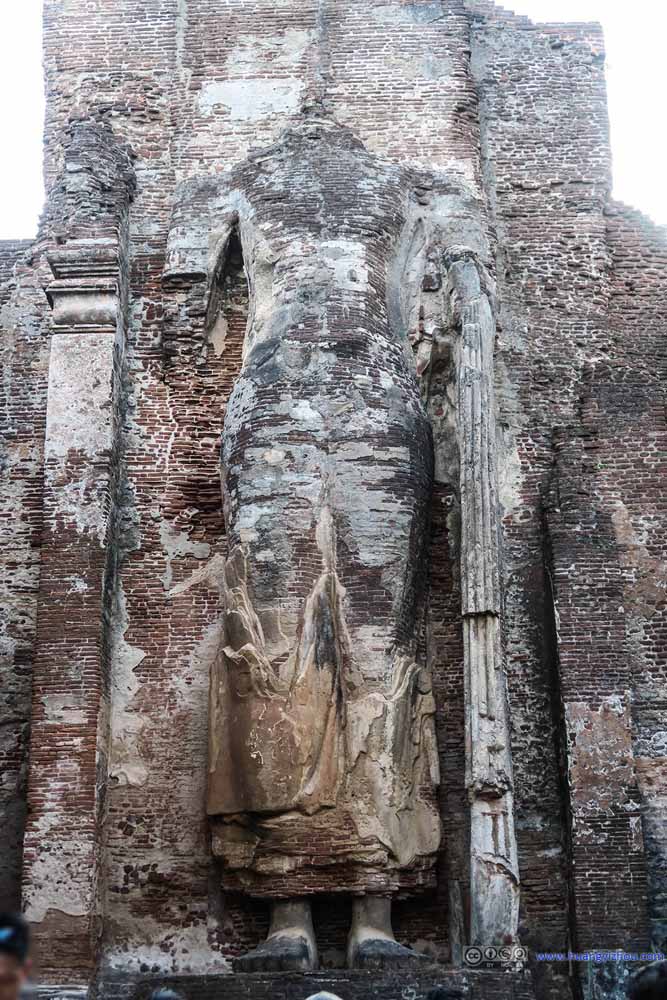
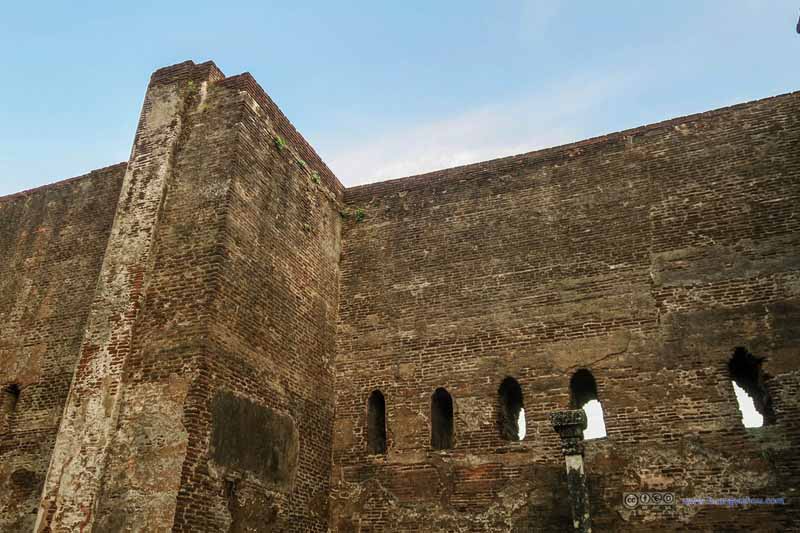
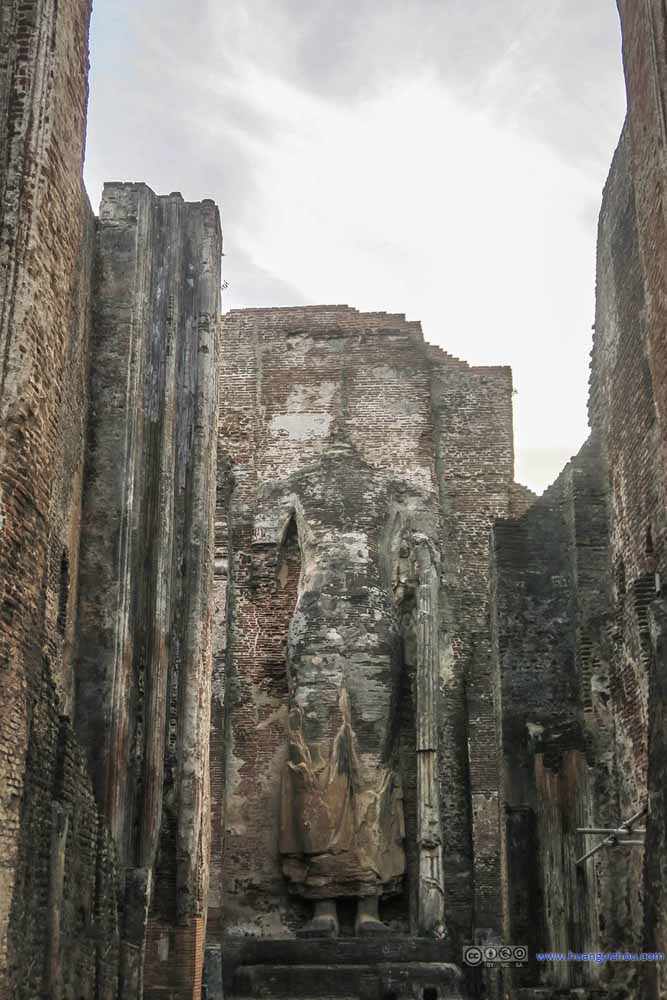
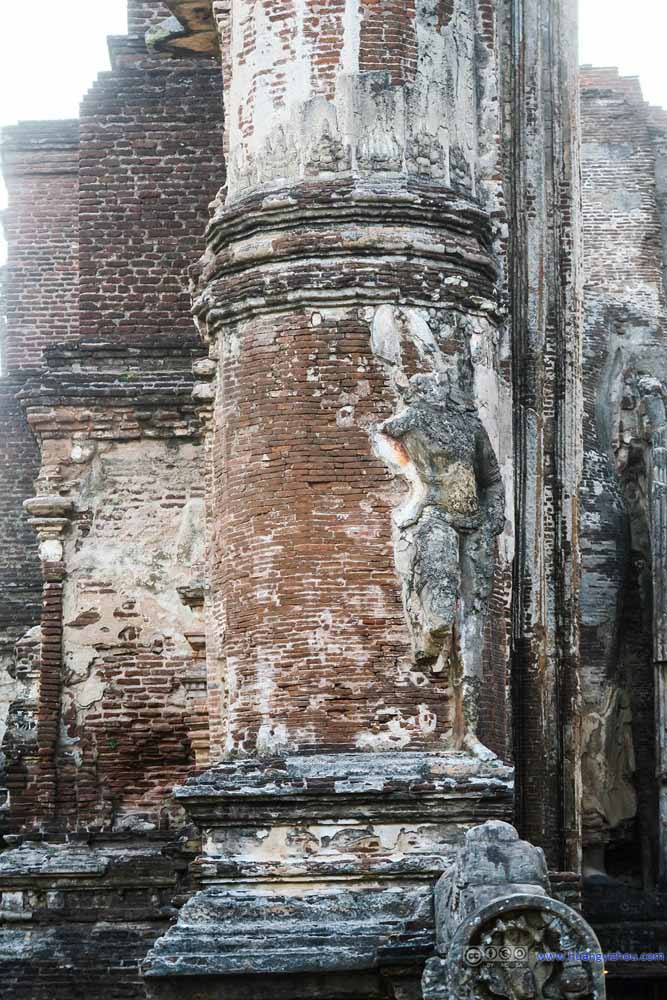
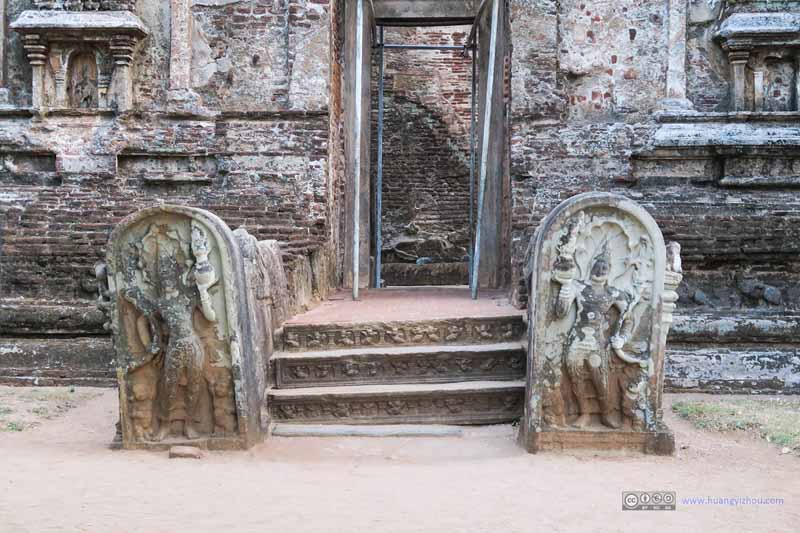
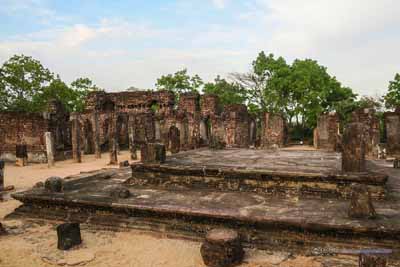
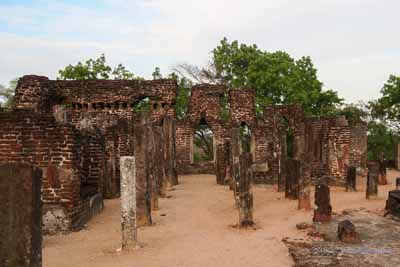
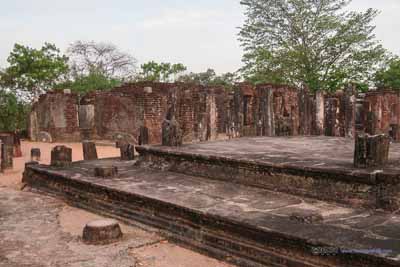
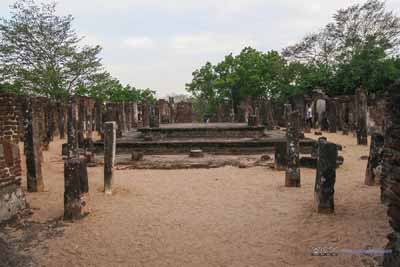


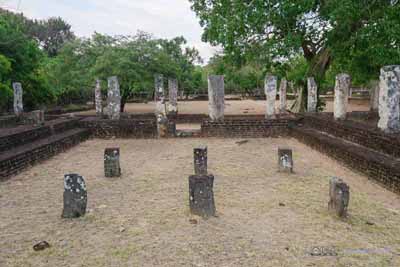
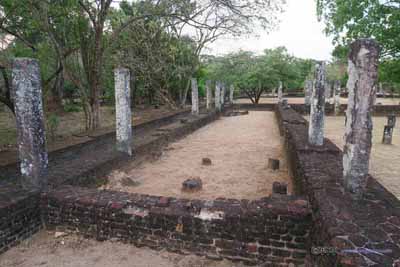
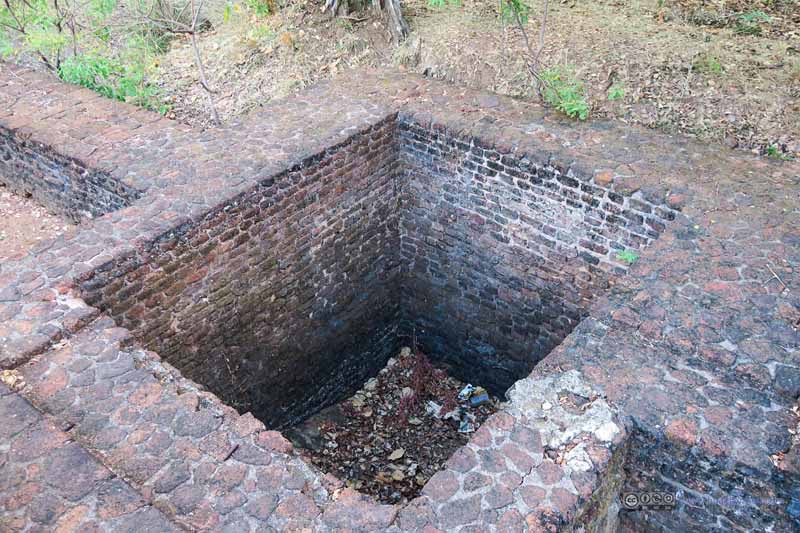
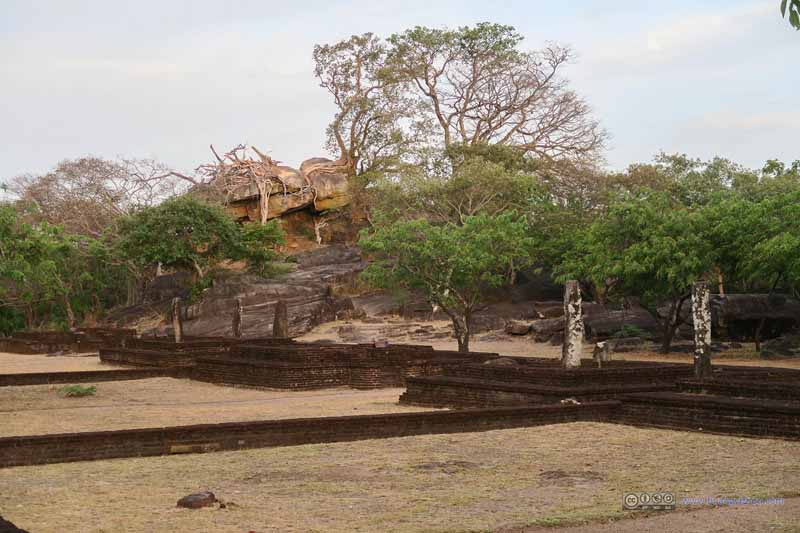

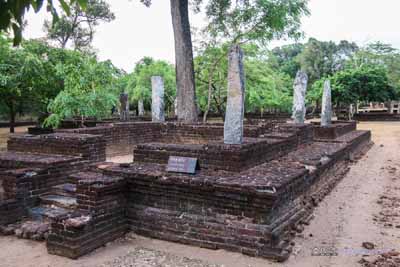

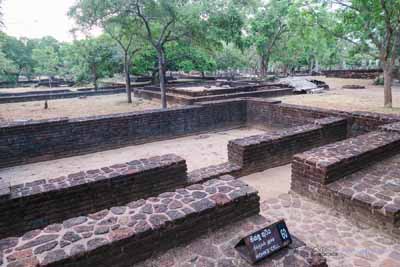
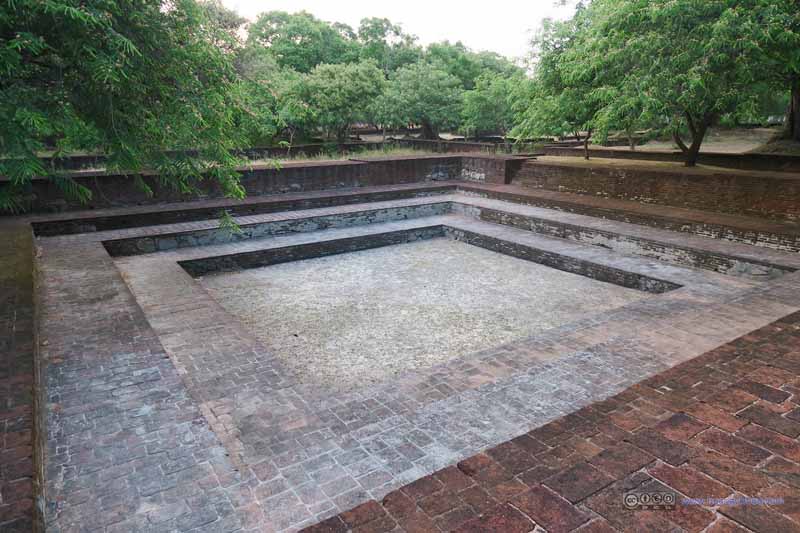
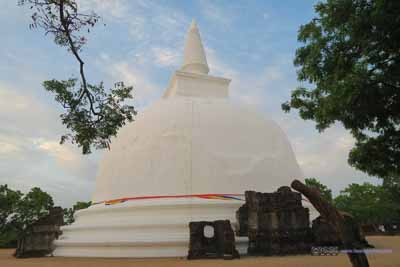
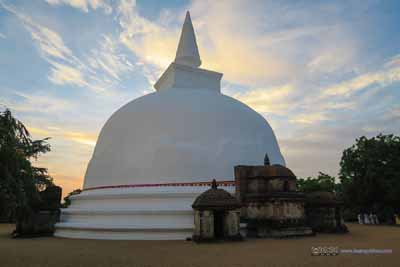
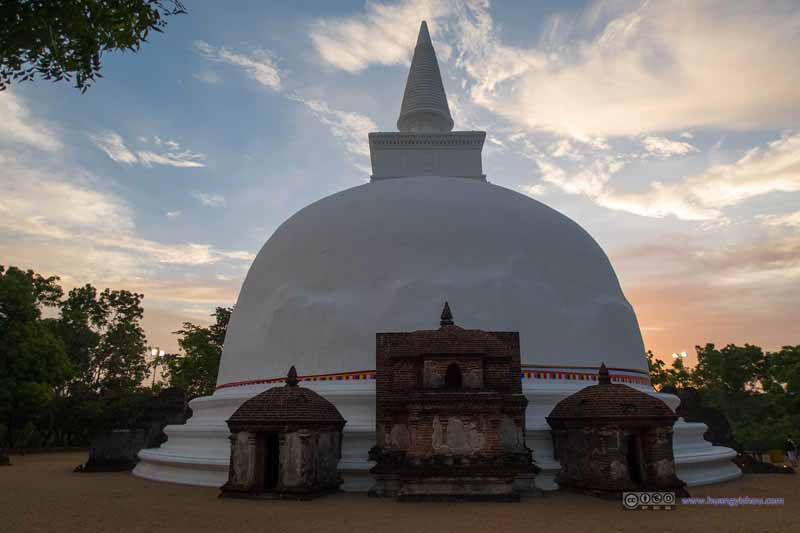
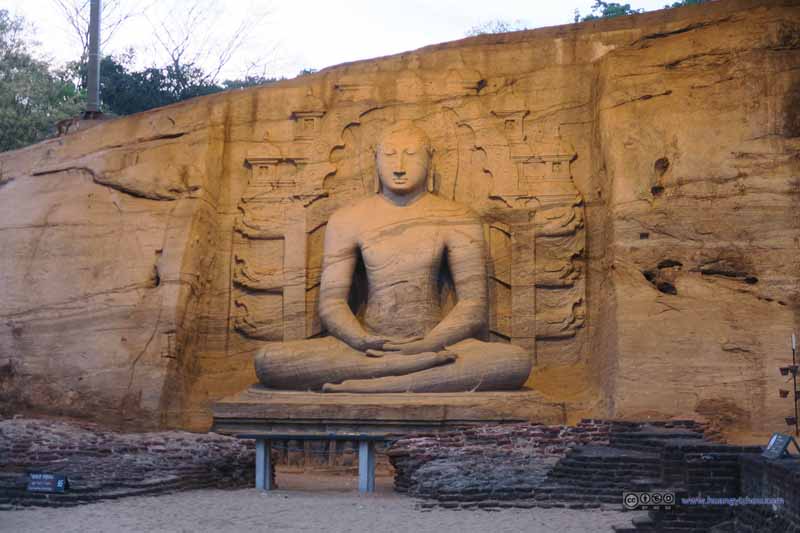
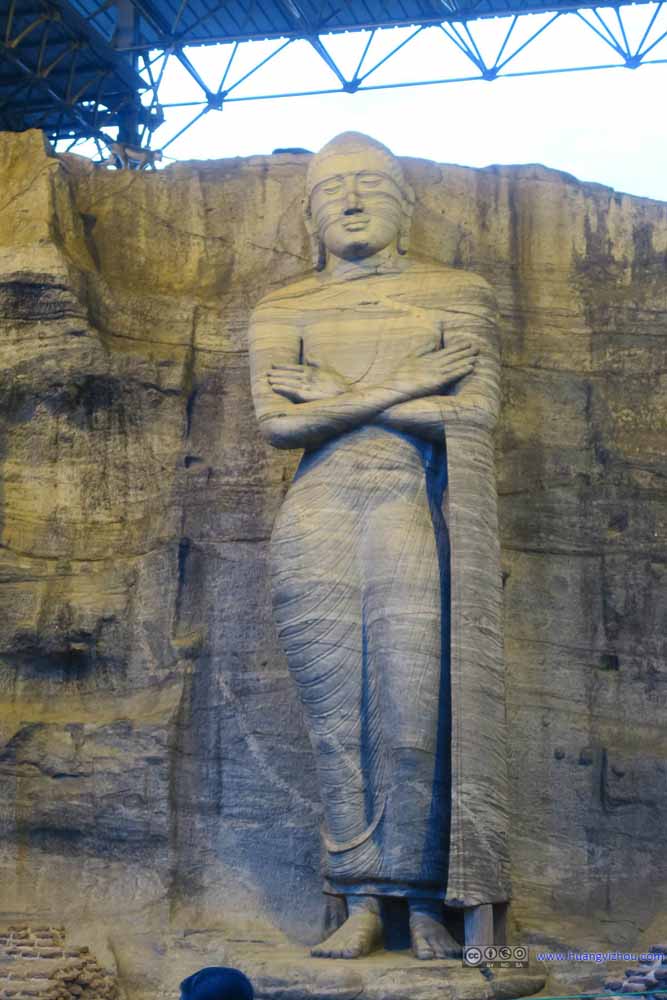
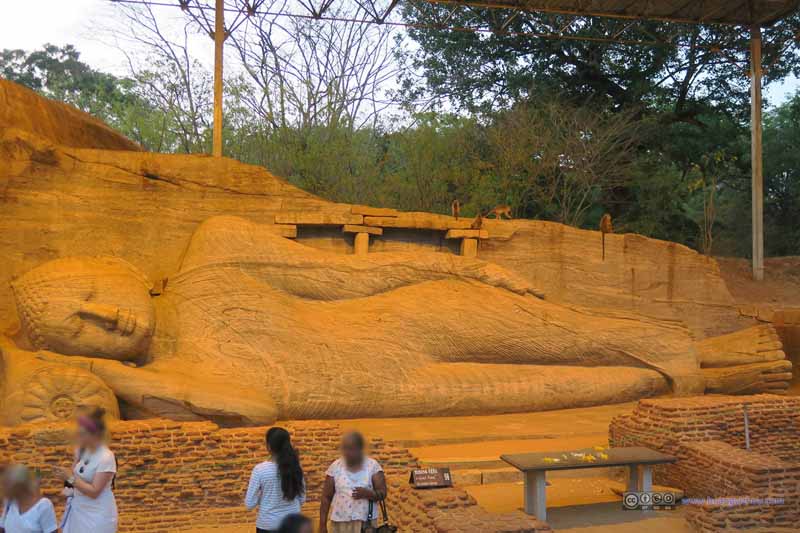
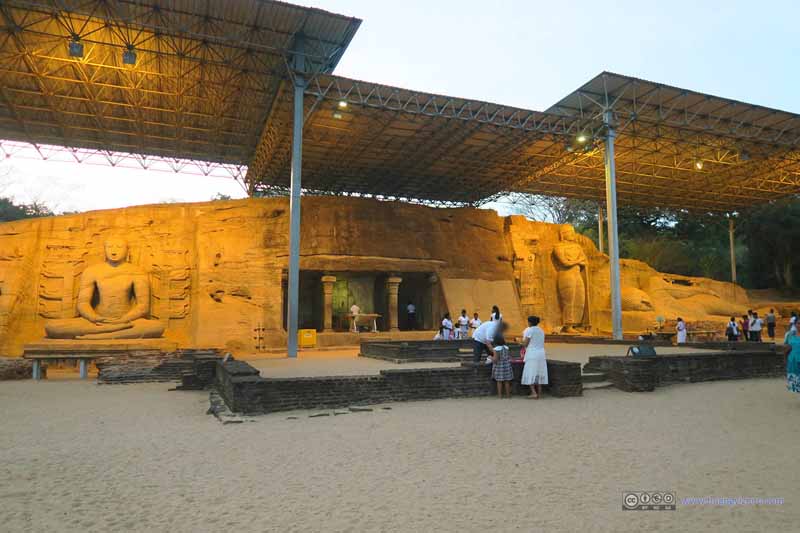
Relevant information …. there are plenty of things written in this blog that are important to remember. With basic information, this blog has also put effort into mentioning small details.
Thanks for the details.